Find In Store
Personalized In-Store Shopping
Role
Product Designer
Evaluation PM
Team
Inhae Kim
Stefanie Choi
Kotoko Yamada
Kaitlyn He
Duration
January - June 2019
Find In Store
Personalized In-Store Shopping
Role
Product Designer
Evaluation PM
Team
Inhae Kim
Stefanie Choi
Kotoko Yamada
Kaitlyn He
Duration
January - June 2019
After the rise of online shopping, shoppers like to make a connection between online and offline shopping experiences. Find In Store is an offline shopping experience that helps goal-oriented customers find their items in a short time. To provide the best omnichannel experience in in-store shopping experience, a team of four senior undergraduate students in Human Centered Design and Engineering (HCDE) at the University of Washington collaborated for six months to research the problem of in-store shopping experience, ideate what can be designed to fill the needs of the customers, evaluate and prototype our design, and implement the design solution to present at HCDE Open House.
Sponsored by Nordstrom, Vibe, and Human Centered Design and Engineering in the University of Washington
Find In Store is an offline shopping experience that helps goal-oriented customers to find their items in a short time. To provide the best omnichannel experience in in-store shopping experience, team of four senior undergraduate students in Human Centered Design and Engineering (HCDE) at the University of Washington collaborated for 6 months to research the problem on in-store shopping experience, to ideate what can be designed to fill the needs of the customers, to evaluate and prototype our design, and to implement the design solution to present at HCDE Open House.
Sponsored by Nordstrom, Vibe, and Human Centered Design and Engineering in University of Washington
After the rise of the online shopping, shoppers like to make a connection between online and offline shopping experiences. Find In Store is an offline shopping experience that helps goal-oriented customers to find their items in a short time. To provide the best omnichannel experience in in-store shopping experience, team of four senior undergraduate students in Human Centered Design and Engineering (HCDE) at the University of Washington collaborated for 6 months to research the problem on in-store shopping experience, to ideate what can be designed to fill the needs of the customers, to evaluate and prototype our design, and to implement the design solution to present at HCDE Open House.
Sponsored by Nordstrom, Vibe, and Human Centered Design and Engineering in University of Washington
"When shopping for a specific item, I must walk the entire floor [in Nordstrom].
It took a long time to figure out where the item is."
- Nordy Club member
Concept Background
As people get closer to social media, they began to use the online shopping experience to connect into offline store. For Nordstrom specifically, it was one of the first to integrate harmonious offline and online (also called omnichannel) capabilities. This allowed the company to serve its customers seamlessly both across both channels.
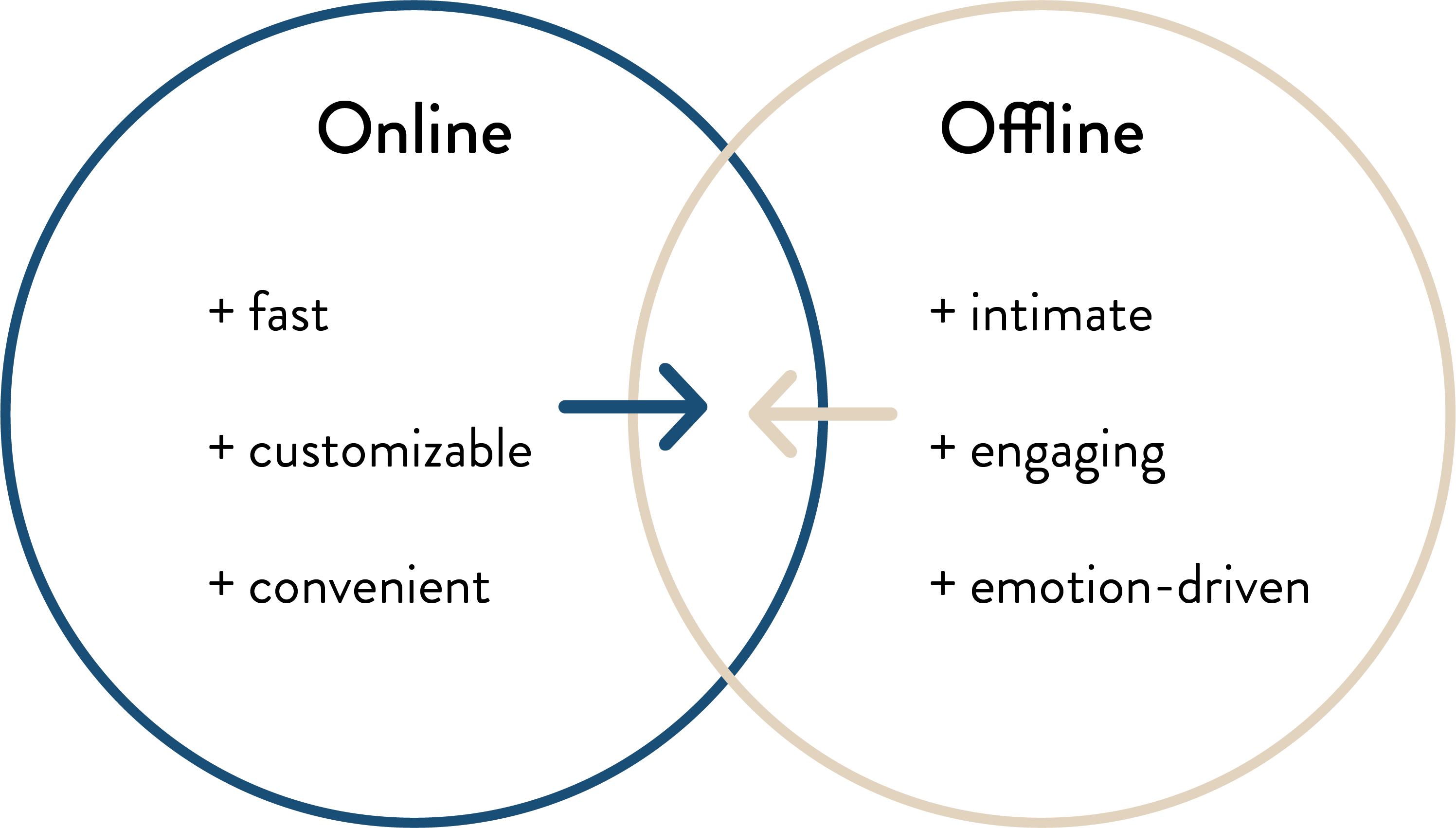
As online shopping has grown tremendously, 63% of shopping occasions begin online. However, 62% of shoppers still want to go to the store to see, touch, feel and try out items. And 65% of offline shoppers decide not to purchase anything if they can't find the item with the proper size or color. So, this project focused on bridging the pros of online and offline shopping experiences to create more engaging and fulfilling shopping experiences, especially in item discovery.
Such omnichannel experiences help to meet and exceed customer’s expectations around speed, convenience, and personalization, propelling them to be one of the top retail companies. We are motivated by the success of Nordstrom’s omnichannel experiences. It’s important that we tackle the challenge of integrating an omnichannel experience in our project because it is crucial to not only the Nordstrom brand but also other retail stores as a driving factor for future retail experiences. So we focused on bridging the pros of online and offline shopping experiences to create more engaging and fulfilling shopping experience.
Design Process

Click here to read the whole design process.
01 User Research

We conducted multi-methodology to research the trends of the retail store and the needs of the Nordstrom customers while maintaining Nordstrom's goal.
What are the trends of retail stores?
We read scholarly papers and news articles to learn the different approaches other stores took to integrate online and offline engagement.
- Well-Rounded: The store should care about not only selling their clothes but also the most comfort of each customer.
- Personalized: Experiences of online ultra-personalized shopping and in-store technologies can synergize to bring a more personalized shopping experience.
- Seamless: Installing technology at the store can help make the connection between online and offline shopping seamless.
- Allow Confidence: Customers want confidence in their purchases from both online and offline.
Competitive Analysis
We read scholarly papers and news articles to learn the different approaches that other stores took to integrate online and offline engagement.
- Well-Rounded: The store should care about not only selling their clothes but also the most comfort of each customer.
- Personalized: Experiences of online ultra-personalized shopping and in-store building connections with the sales associates can synergize to bring more personalized shopping experience.
- Seamless: The installation of technology at the store can help the connection between online and offline shopping to be seamless.
- Allow Confidence: Customers want their confidence in their purchase from both online and offline.
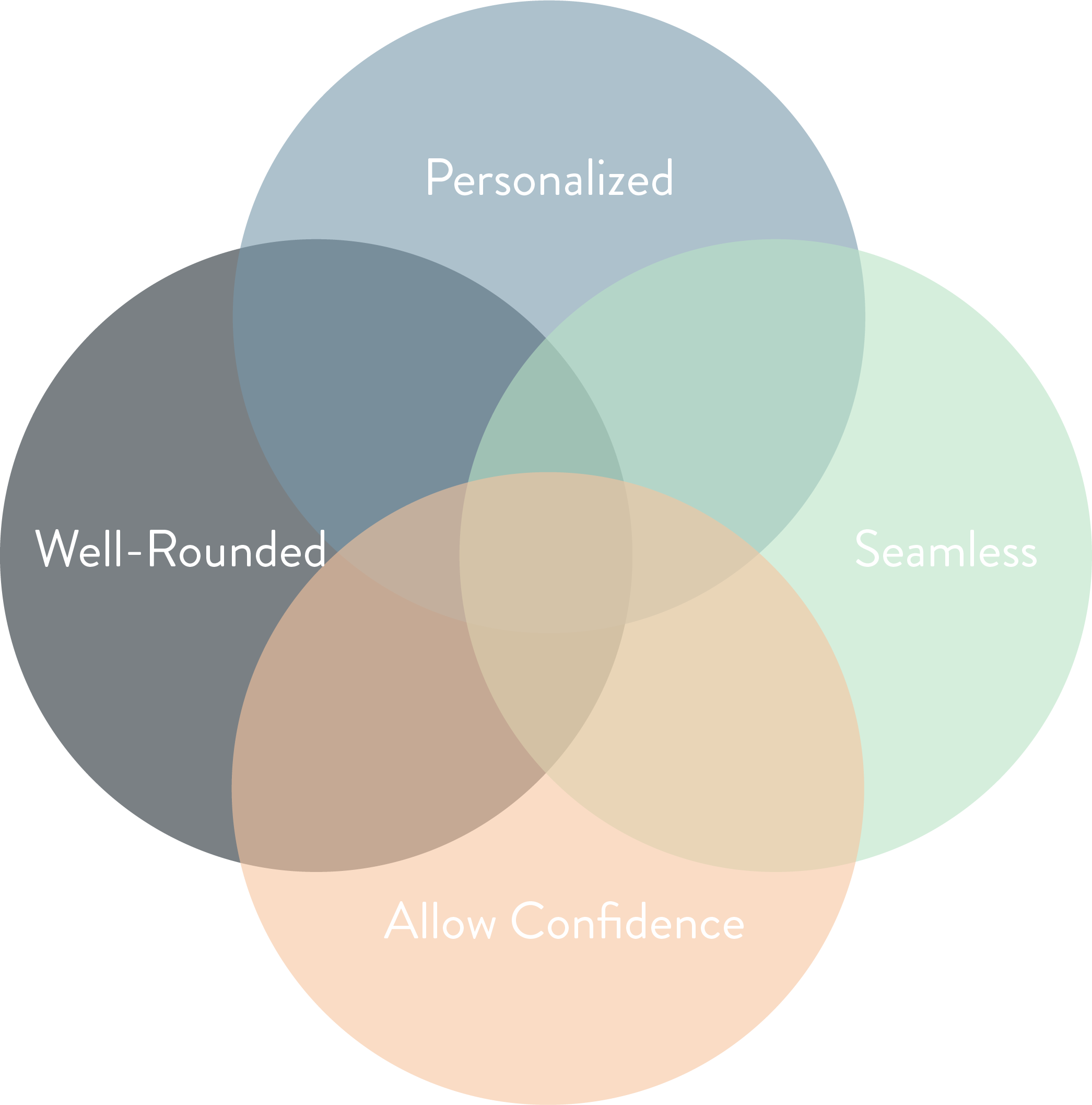
What are customers' pain points?
After conducting the shop-along observation studies and interviews, four of us got together to share and analyze our data through affinity diagramming to identify the pain points of in-store shoppers.
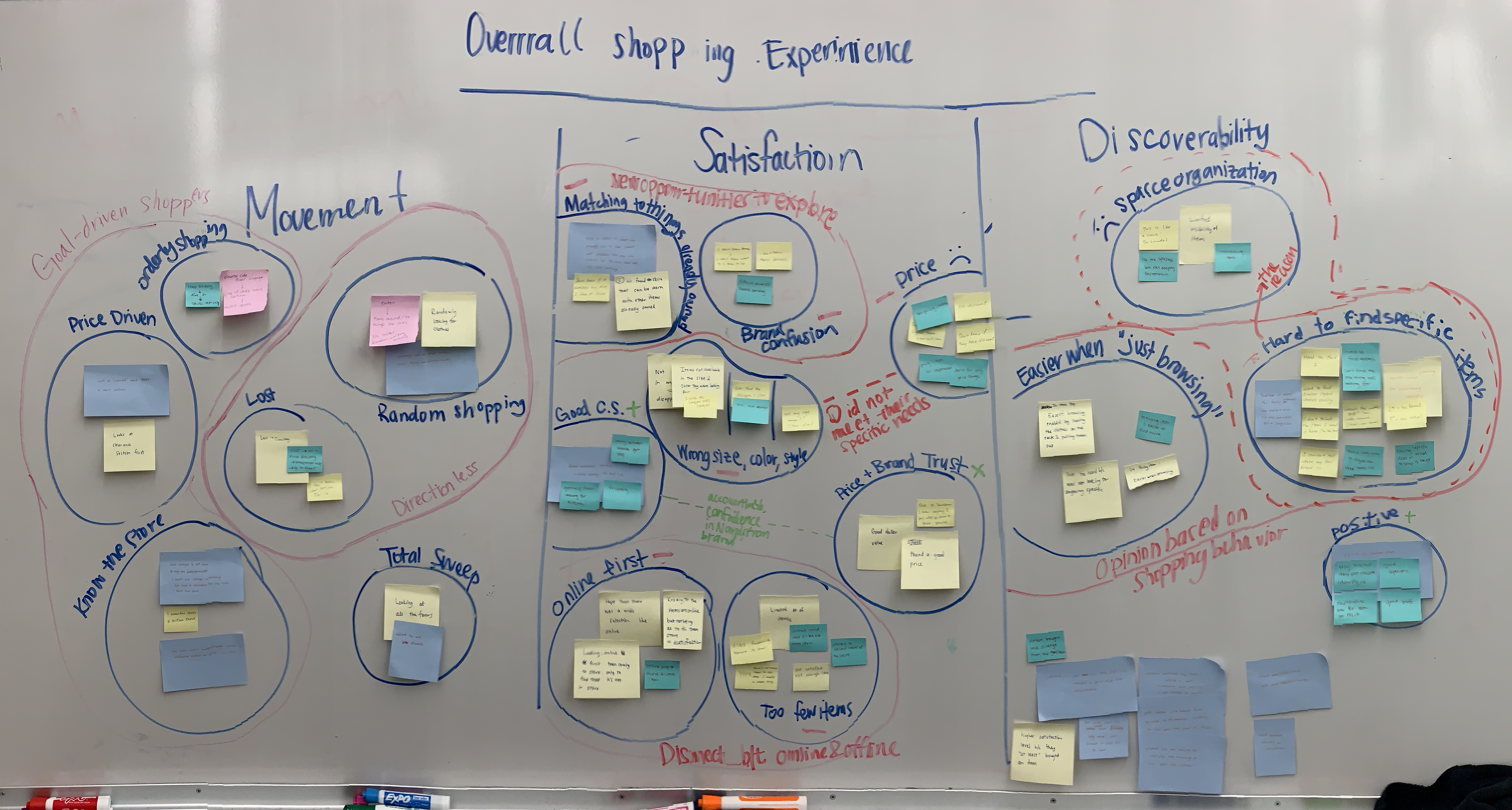
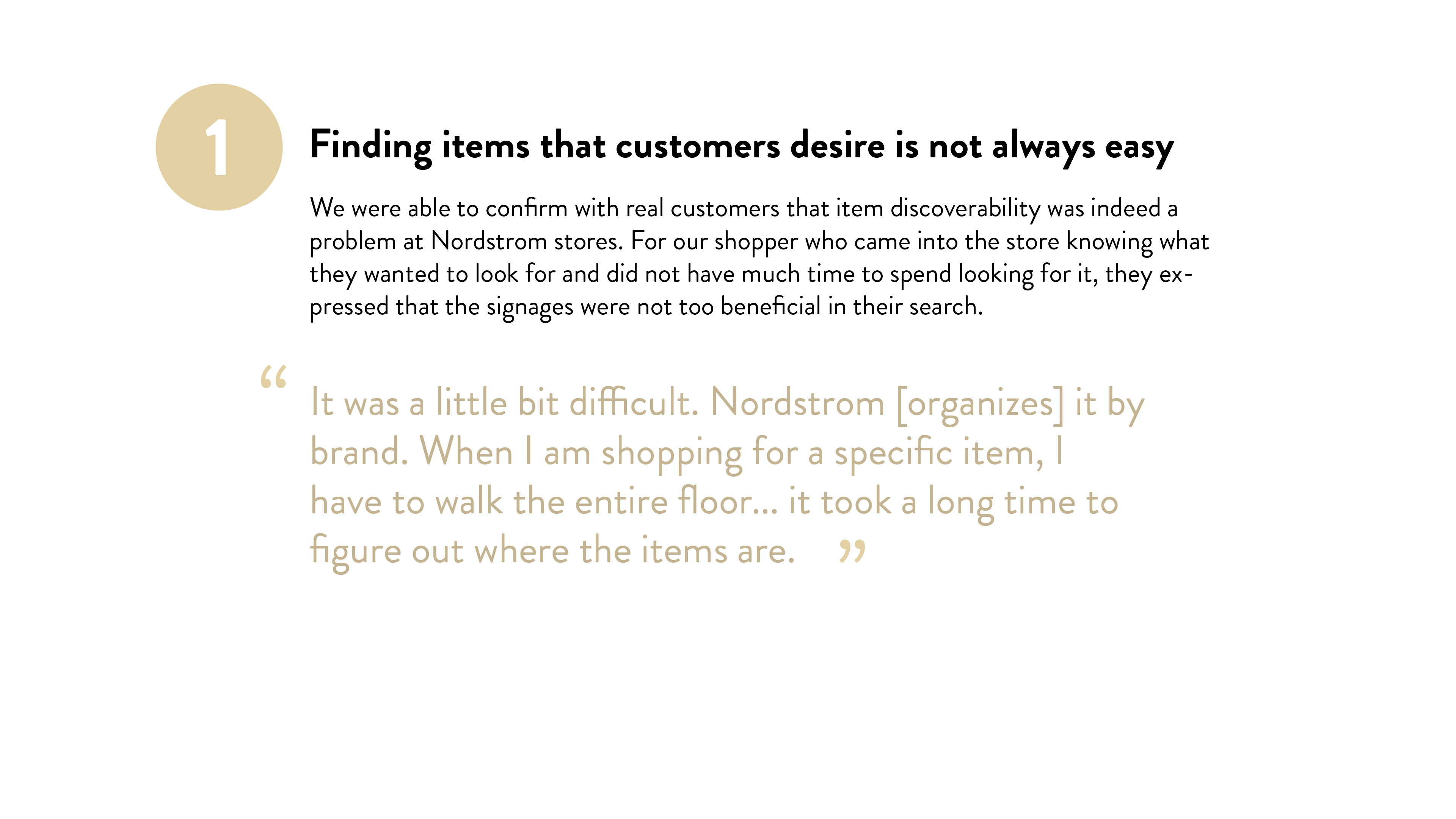
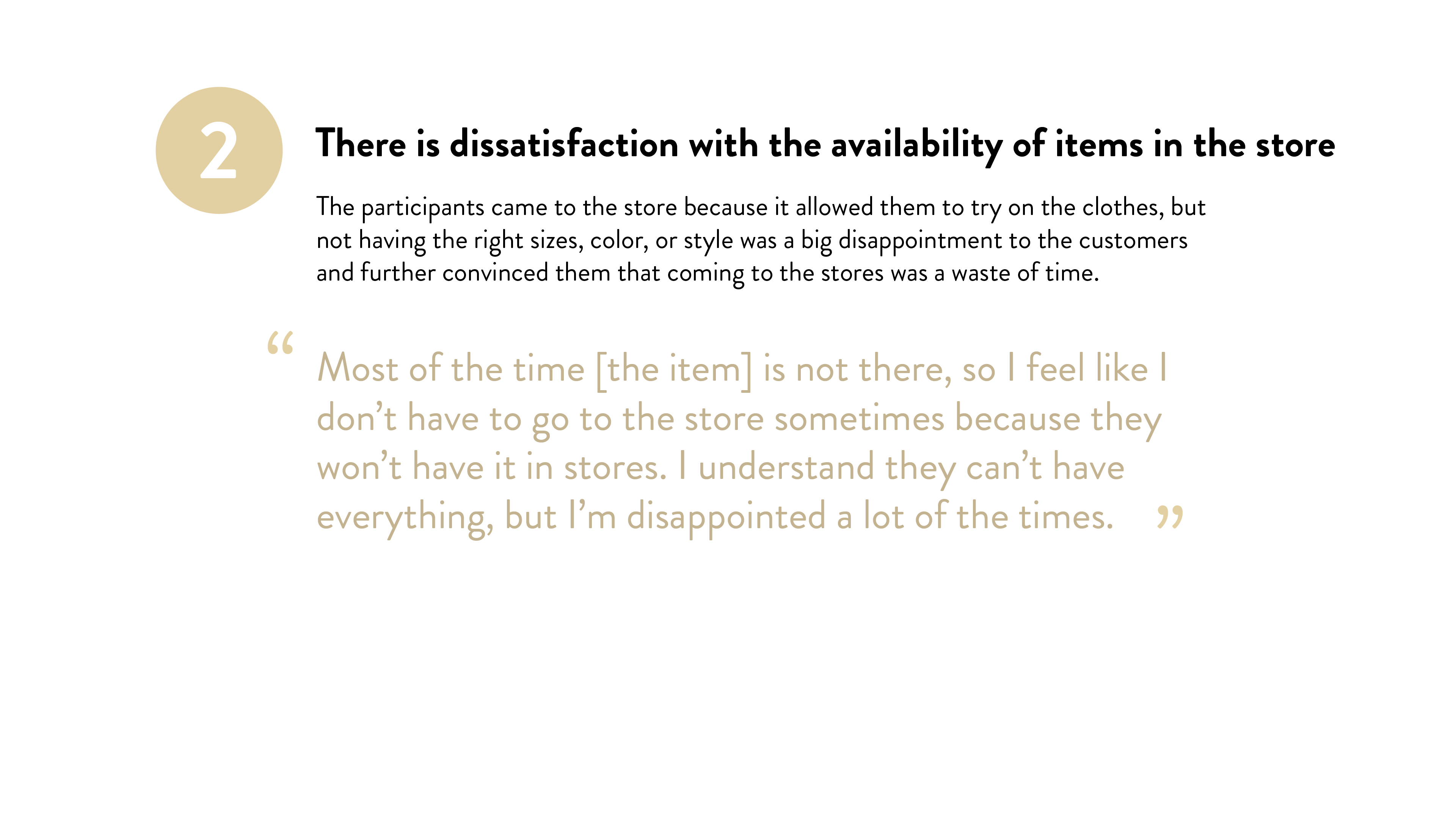
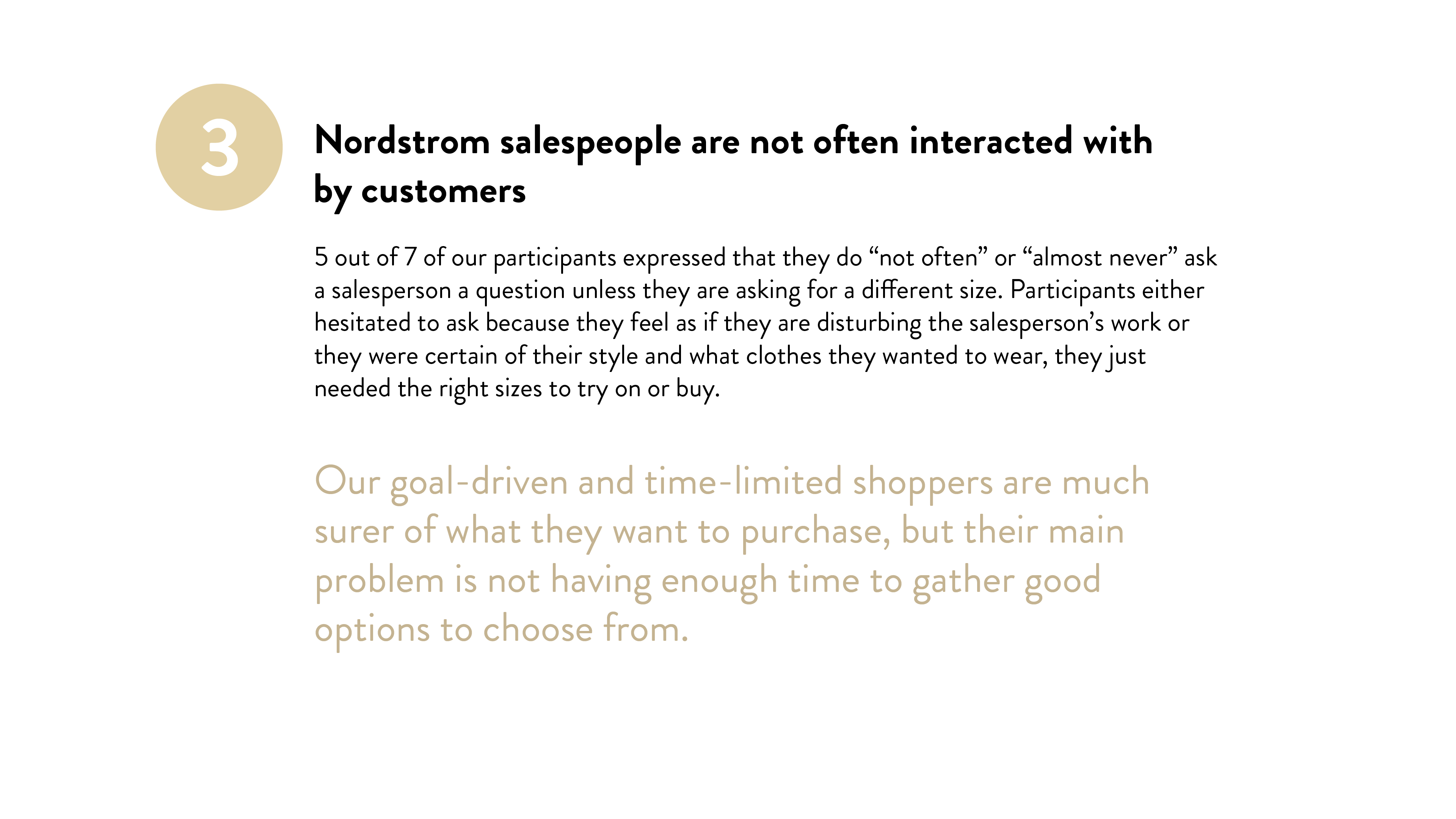
Who are the customers?
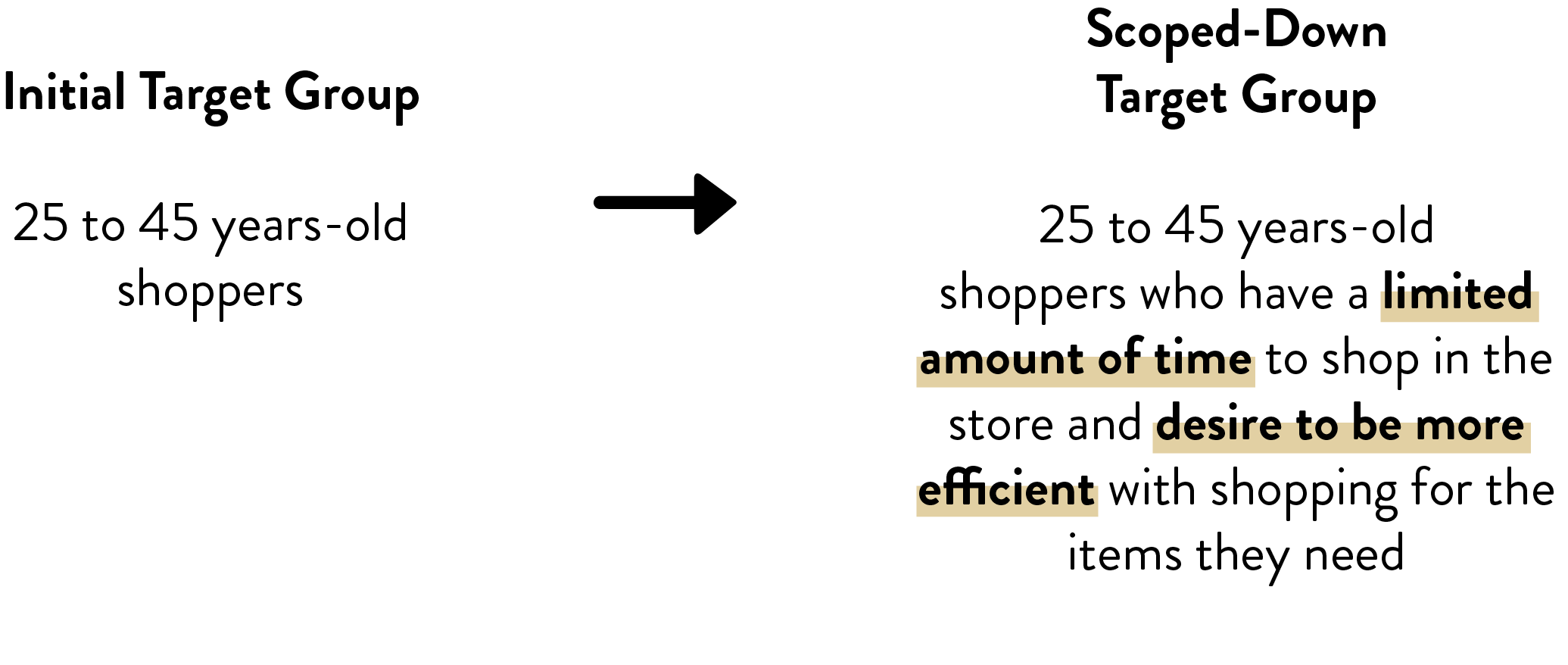
We began with a very general target group: 25 to 45-year-old shoppers. However, due to lack of time, we focused on the latter type of shoppers because more issues arose regarding item discoverability. The two personas represent the main two groups of customers that we identified through our research findings.
We began with a very general target group: 25 to 45-year-old shoppers. However, designing for all shoppers who fell into this age range was too broad of a focus given the timeframe of this project. So we decided to focus on the latter type of shoppers because there are more issues that arose relating to item discoverability for our driven and time-limited shoppers.
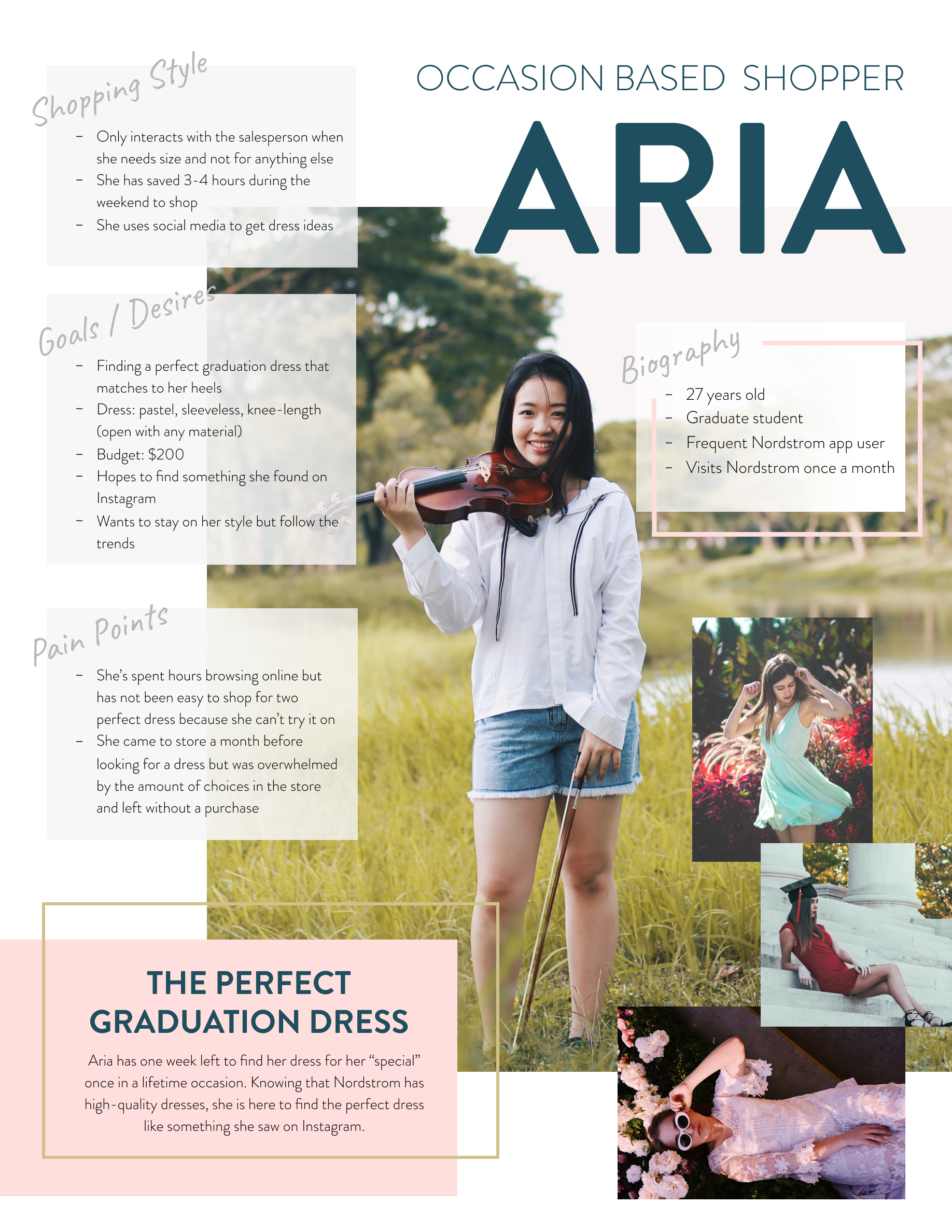
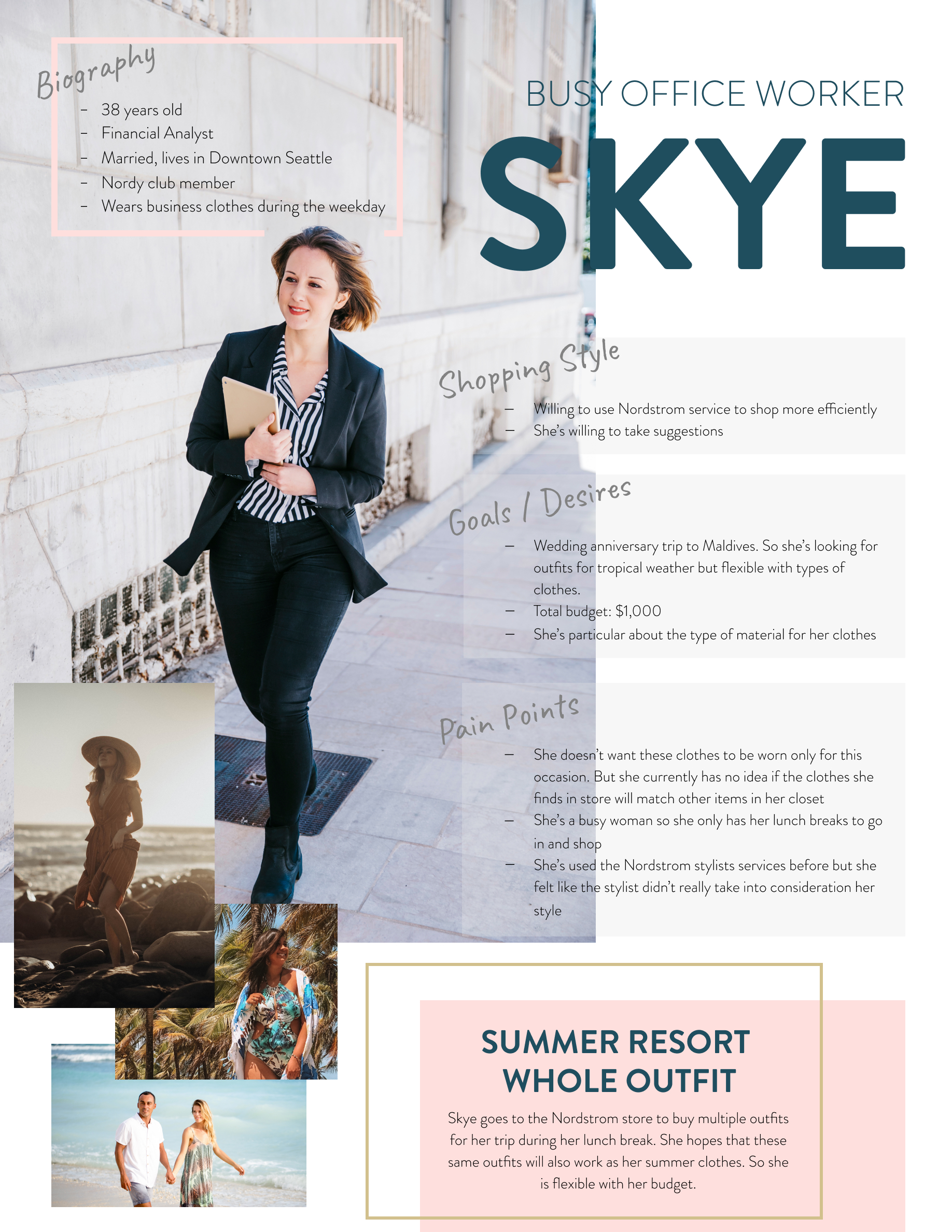
What are the Nordstrom's Business Goals?
- Maintaining the Nordstrom brand of engaging with the customer (Does the item that is recommended fit customer’s personal style, lifestyle, and needs?)
- Helping the customer leave the store with confidence in whatever they purchase
- Customers are able to easily find the items they need while shopping in the store
Design Question
After understanding the busieness goal and pain points of customers, we were able to finalize our design question.
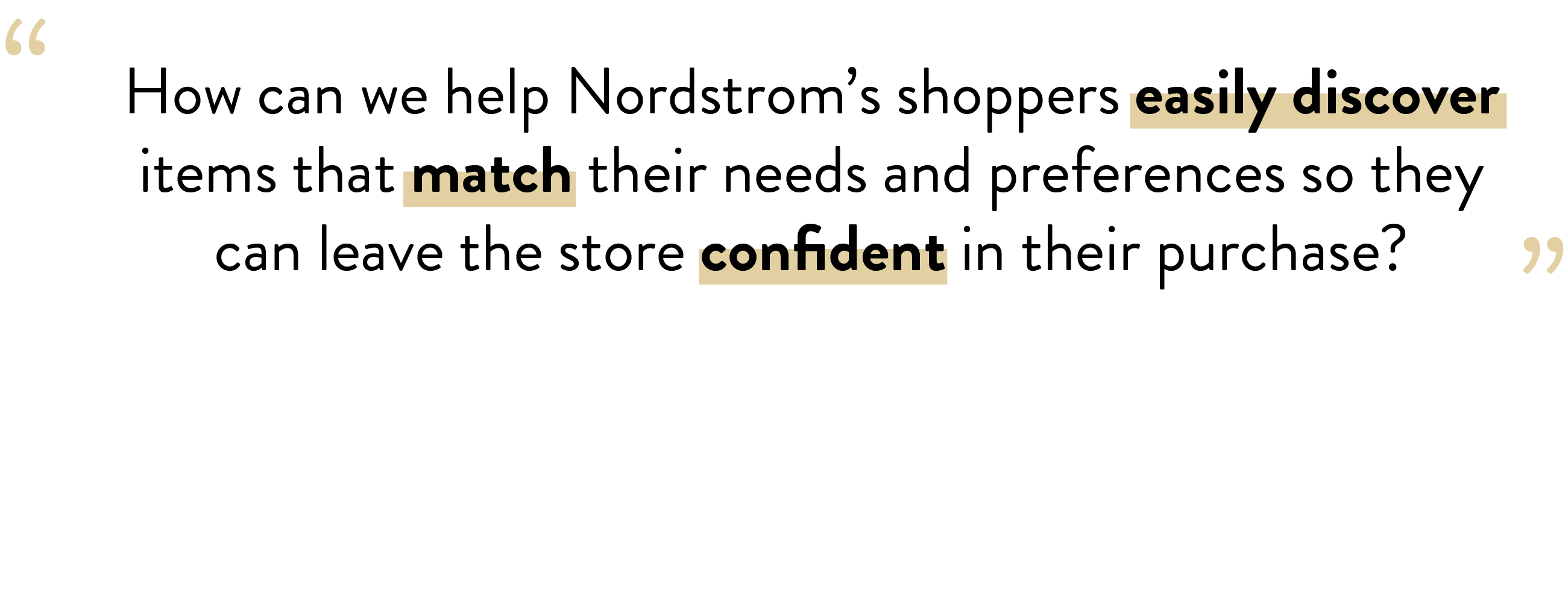
02 IDEATION
02 IDEATION
What are we designing for?
We created nine design requirements to focus on user needs while considering business priorities. To account for both types of priorities, we split the design requirements into two categories: “Must Meet” and “Want to Meet”.
Must Meet
- Allow in-store customers to locate the items that they desire easily.
- In the in-store search, accommodate customer's style, preferences, and the occasion they are shopping for.
- Provide customers with information only on items that are immediately available to purchase at the current store they are shopping at.
- Create an approachable but engaging environment for customers to interact with salespeople.
- Allow customers to see if their potential purchases would match the items they already own while shopping in the stores.
- Ensure that the solution is accessible and visible near the store entrances.
Must Meet
- Allow in-store customers to easily locate the items that they desire.
- In the in-store search, accommodate customer's style, preferences, and the occasion they are shopping for.
- Provide customers with information only items that are immediately available to purchase at the current store they are shopping at.
- Create an approachable but engaging environment for customers to interact with salespeople.
- Allow customers to see if their potential purchases would match the items that they already own while shopping in the stores.
- Ensure that the solution is accessible and visible near the store entrances.
Want to Meet
- Allow Nordstrom to be informed of the customer’s size for clothing items.
- Better inform customers of other services, special events, and sales in the store.
- Enable customers to leave the store confident and satisfied with their purchases.
Want to Meet
- Allow for the Nordstrom to already be informed of the customer’s size for clothing items.
- Better inform customers of other services, special events, and sales going on in the store.
- Enable customers to walk out of the store confident and satisfied with their purchases.
Design Thinking
We each took a weekend to brainstorm and sketch five ideas for our first ideation stage. Utilizing the existing Nordstrom application seemed more implementable and realistic in a business mind. So, I suggested a personal QR code for all Nordy Club members that would be automatically scanned when they enter the store to view the available items. Another idea was to show the store map to guide them to find the item inside.
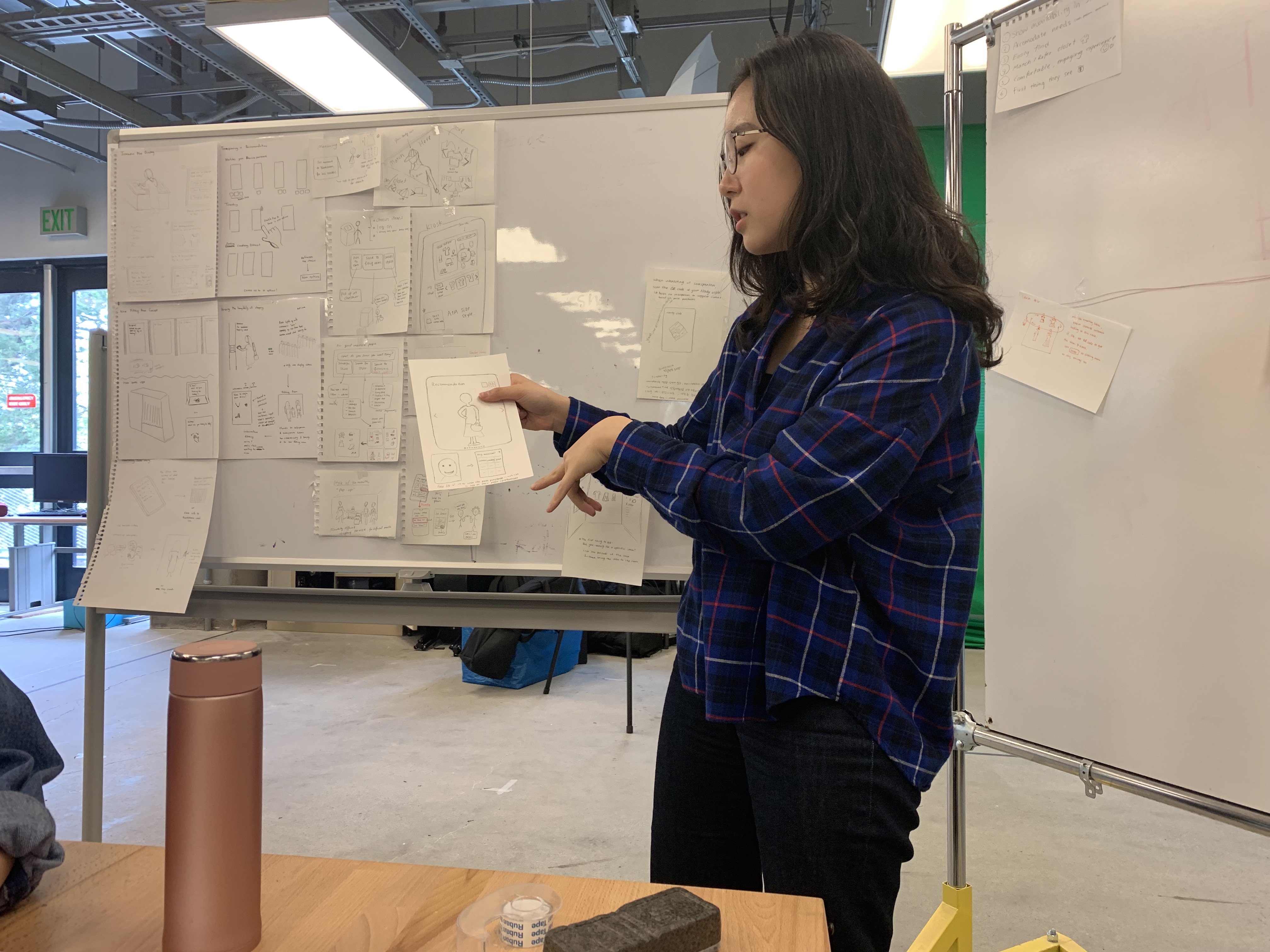
In sharing our ideas, there were some similarities and overlaps between them, and we found this immensely useful because it allowed us to group our ideas into categories and think of ways to build off of one another. We also used a 2x2 matrix to help us ensure that we focused on thoughts that met our users’ needs (based on our design requirements) and the business needs (based on feasibility and ROI).
Storyboard
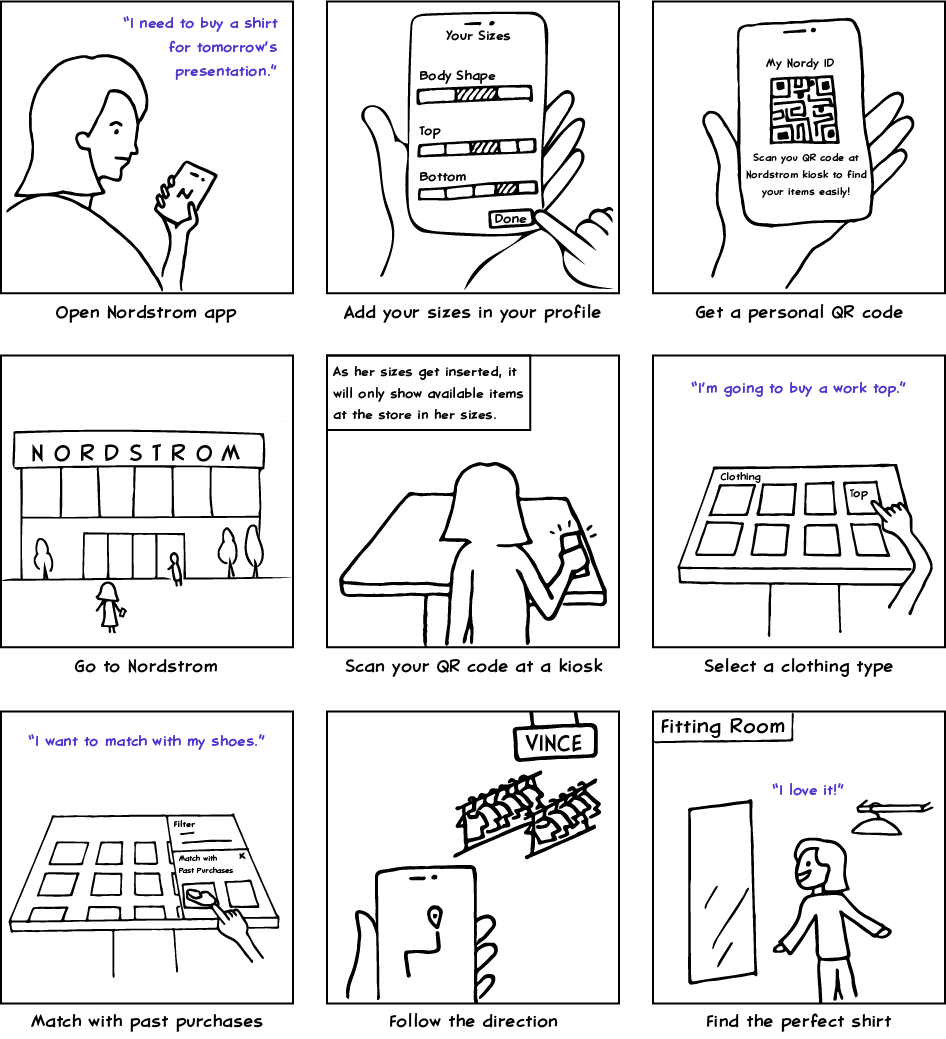
Information Architecture & User Flow
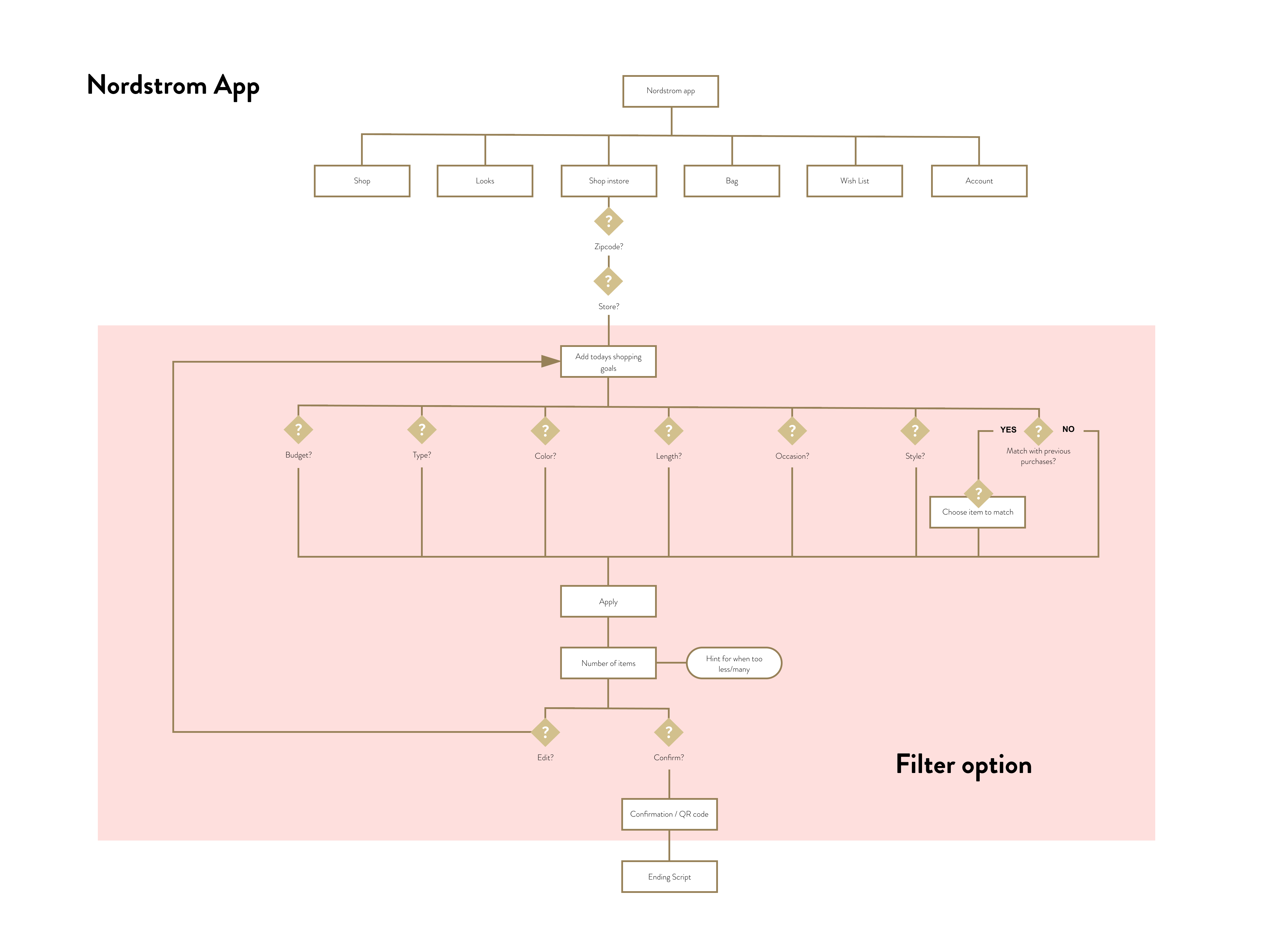
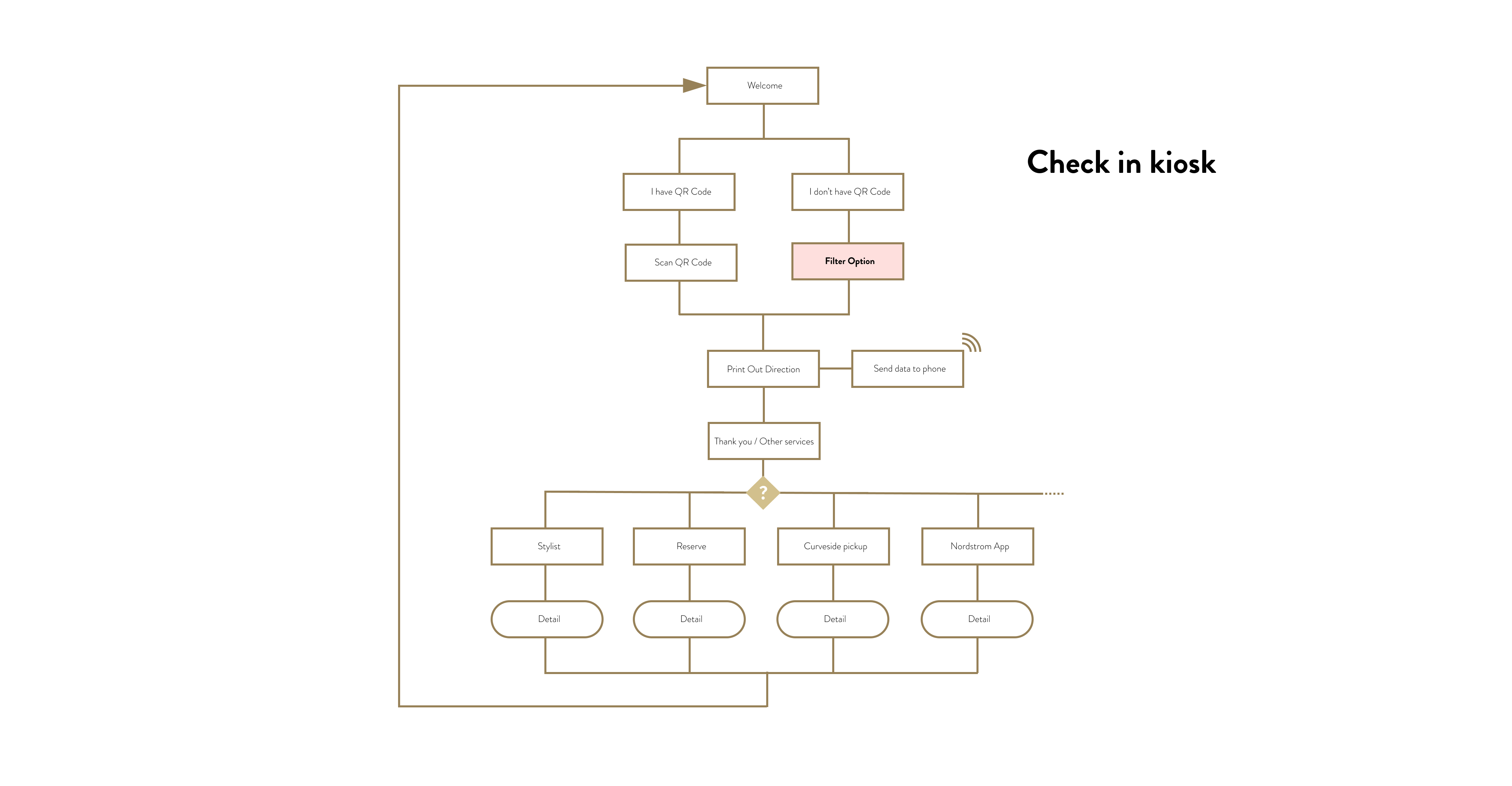
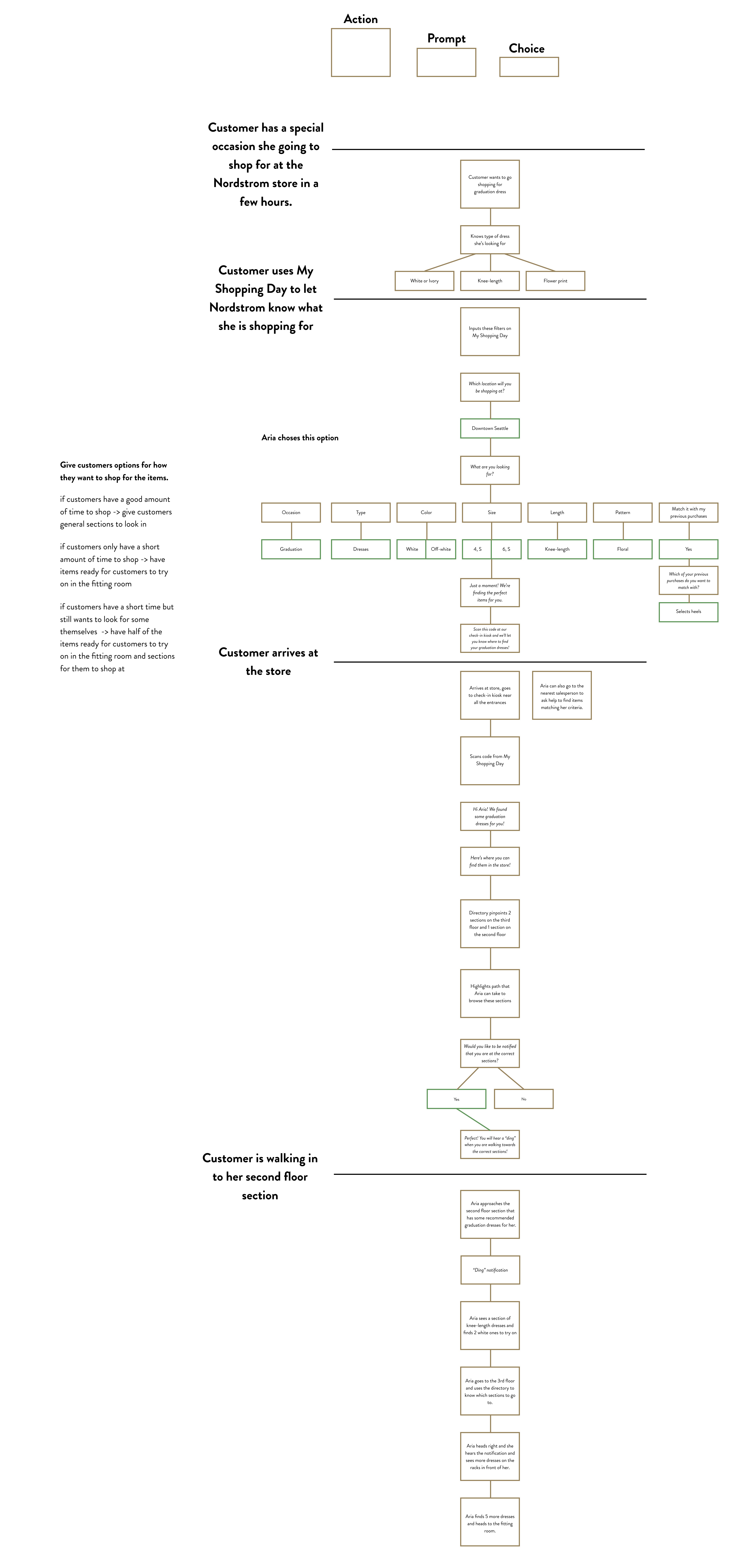
03 EVALUATION
Paper Prototype
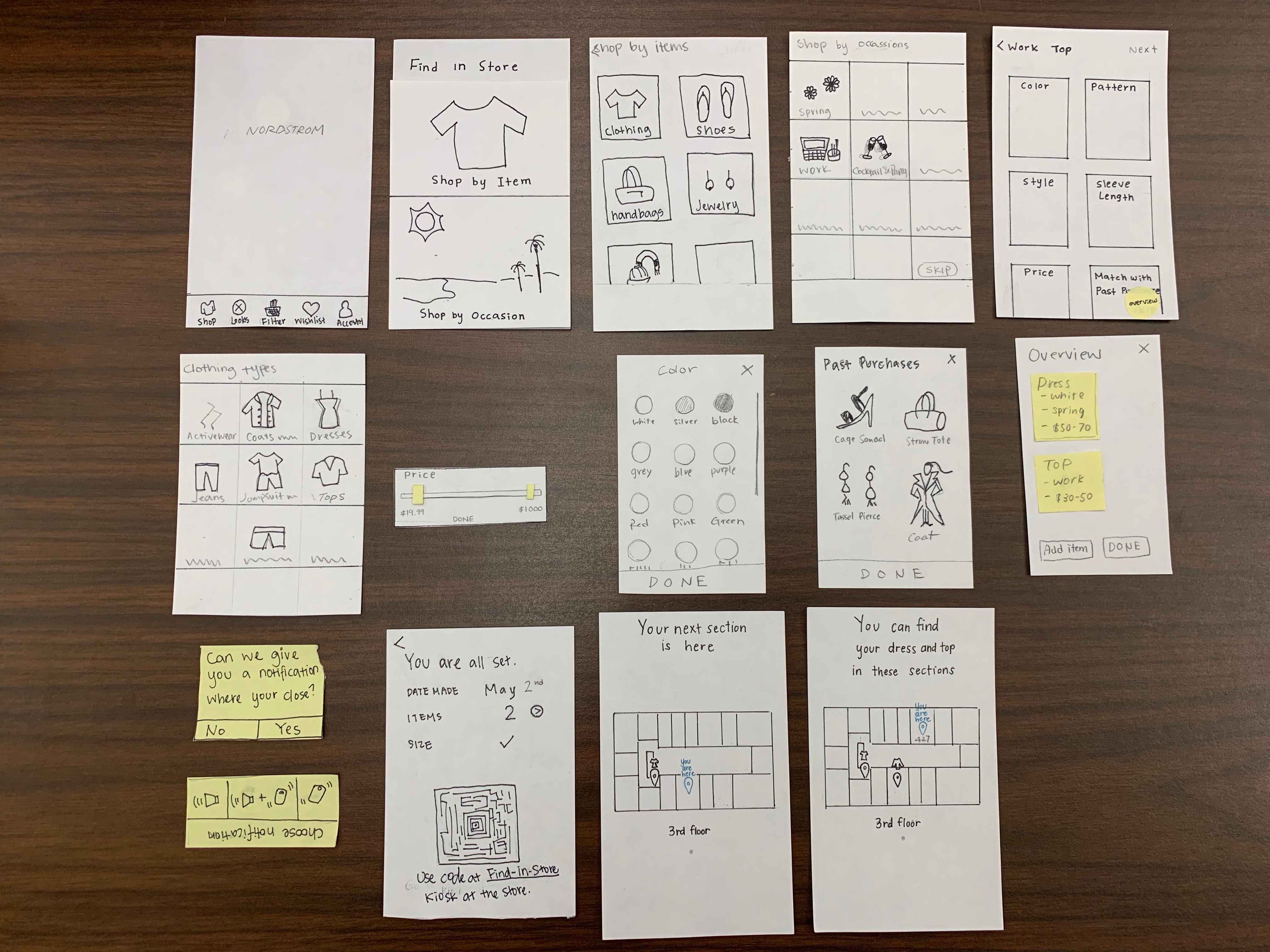
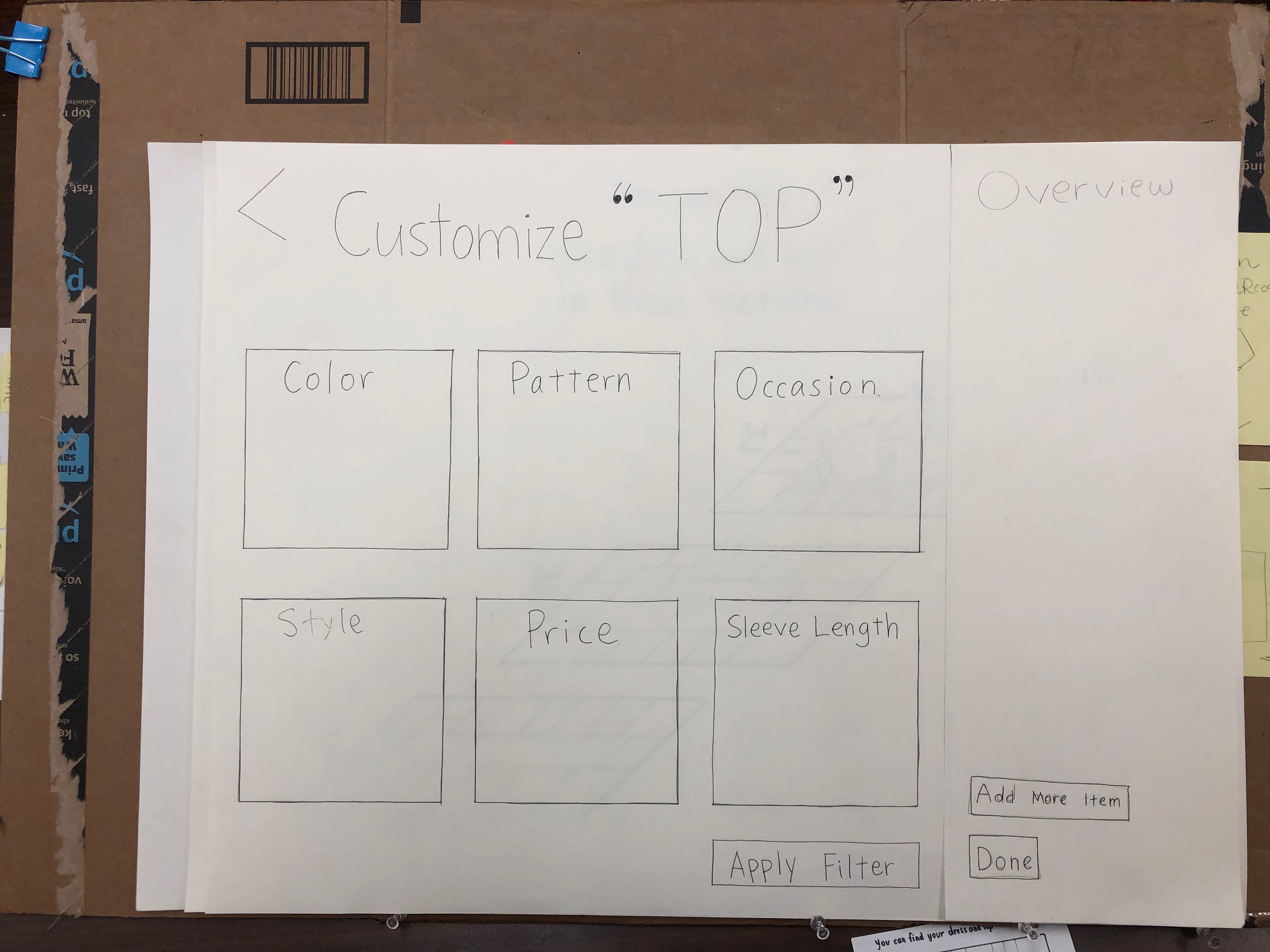
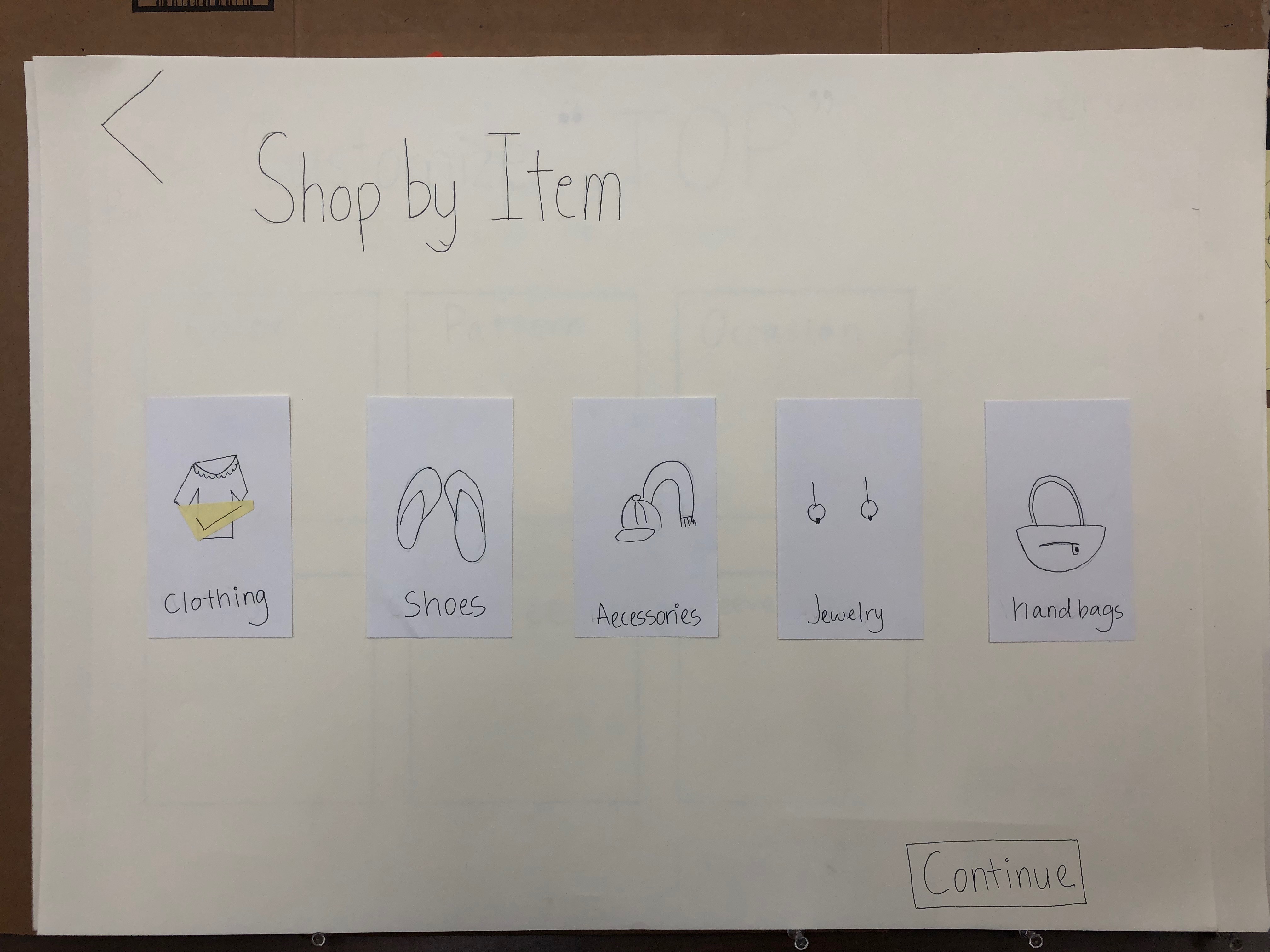
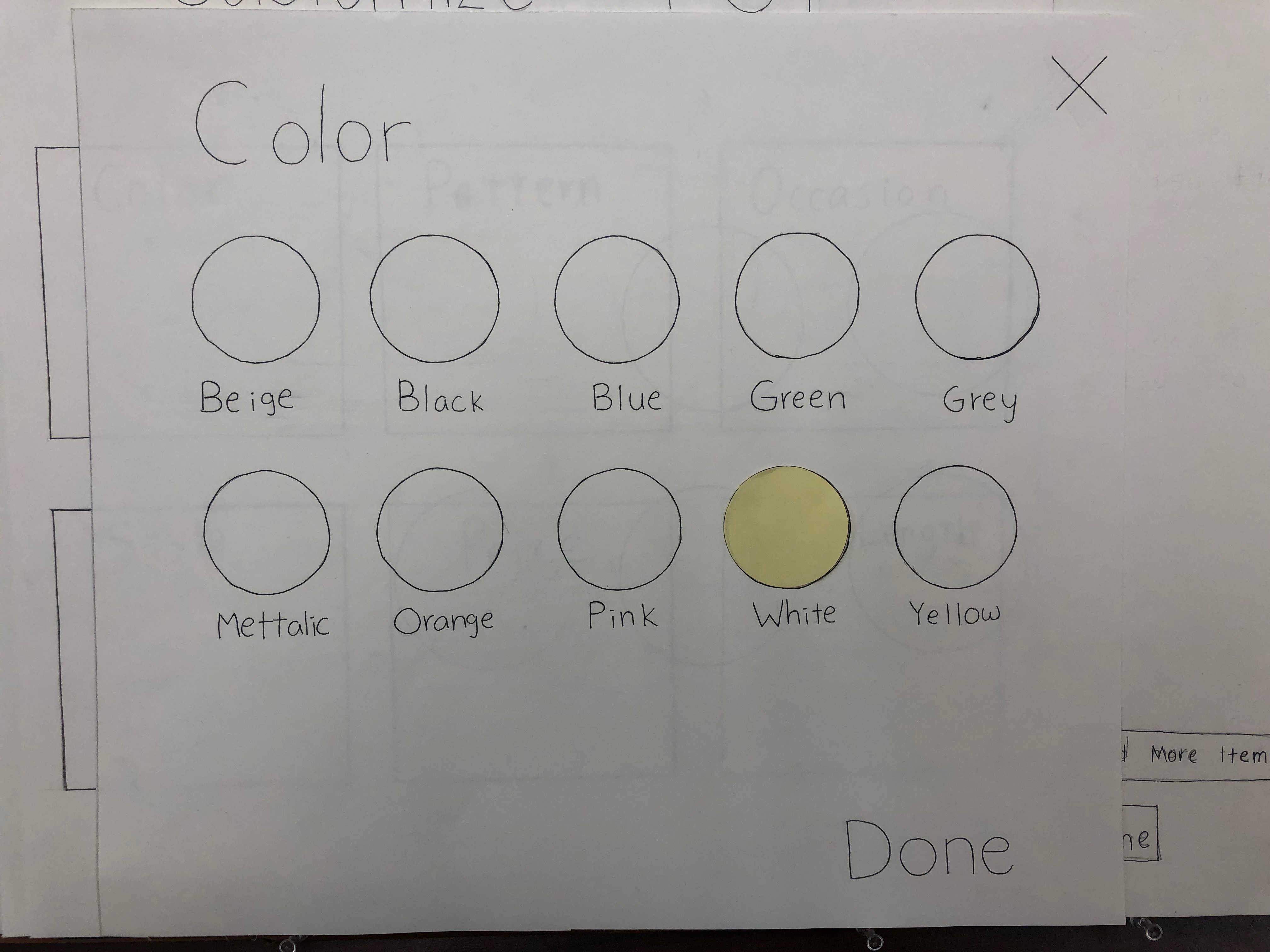
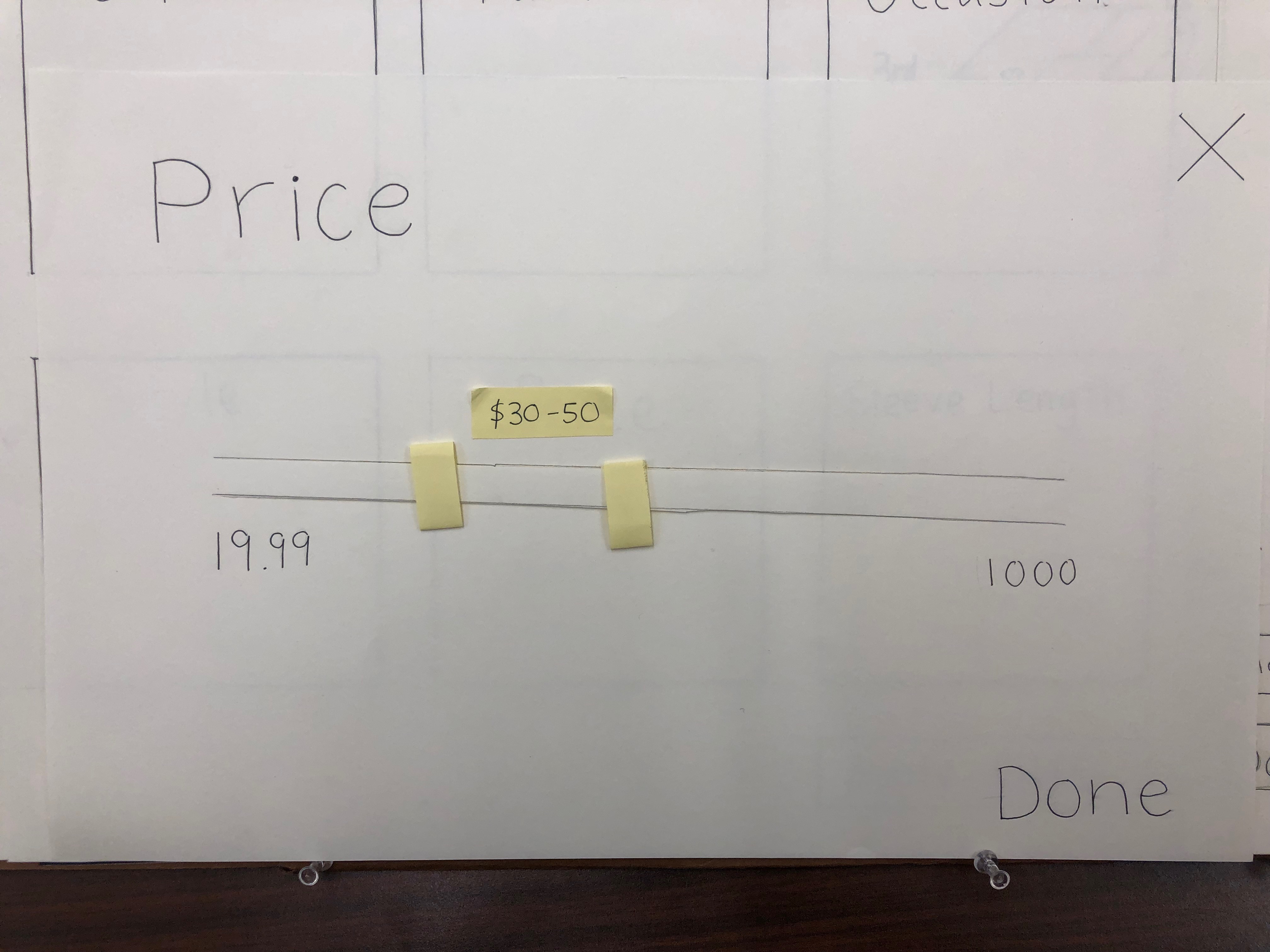
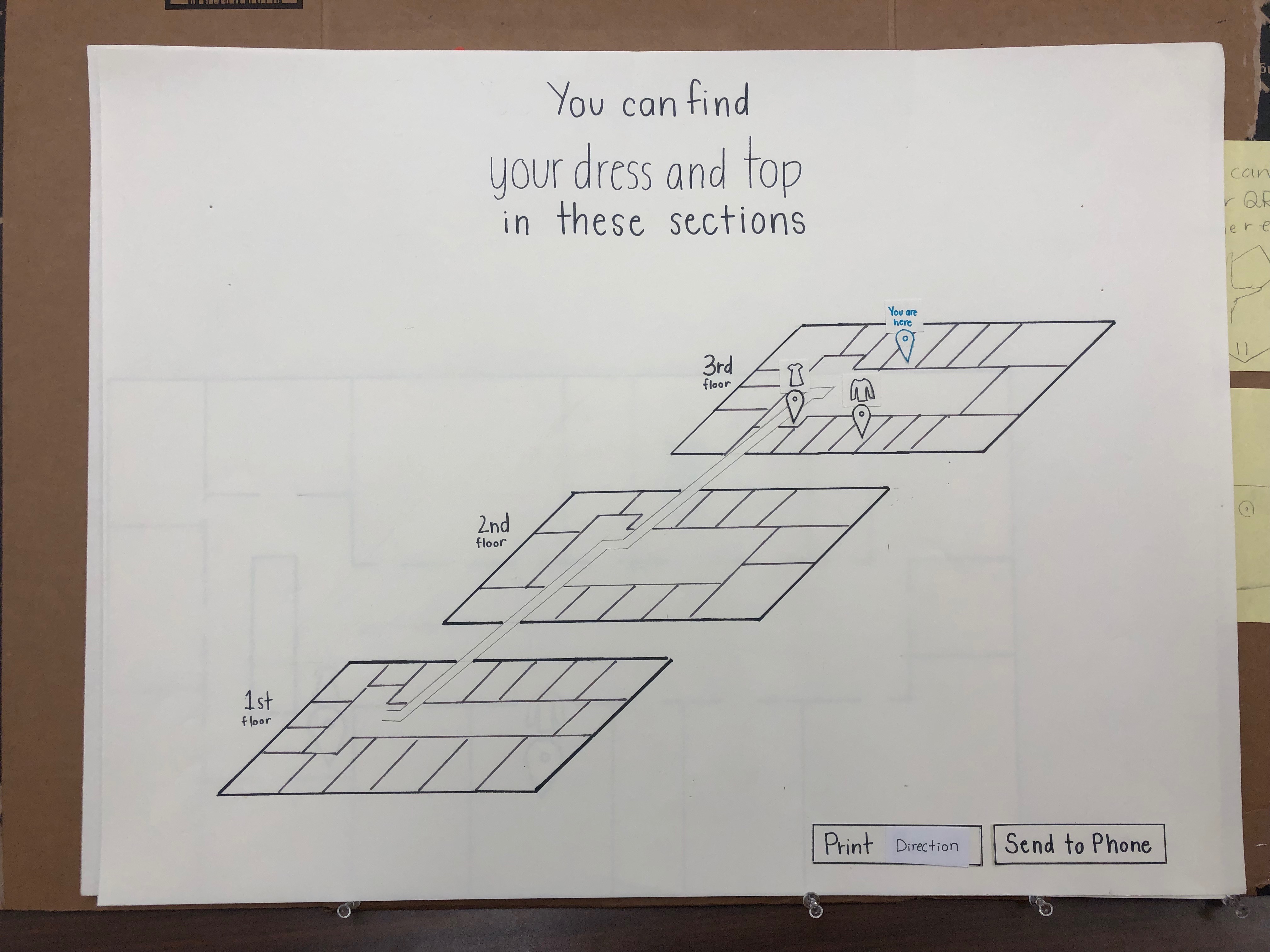
Usability Testing
I was the Project Manager for this milestone because I became most fascinated during the evaluation and prototyping phases, where I got to observe and listen to users’ feedback through usability testing and iterate our idea to be user-centered. To solidify our concept, we conducted usability testing with six participants. We split the team into two due to the process of our initial product concept that involved both mobile devices and kiosk experiences. Here are the concepts that we tested:
- Where should users engage with the filtering experience?
- Will users find the paper receipt compelling?
- What is the most preferred way to add multiple items?
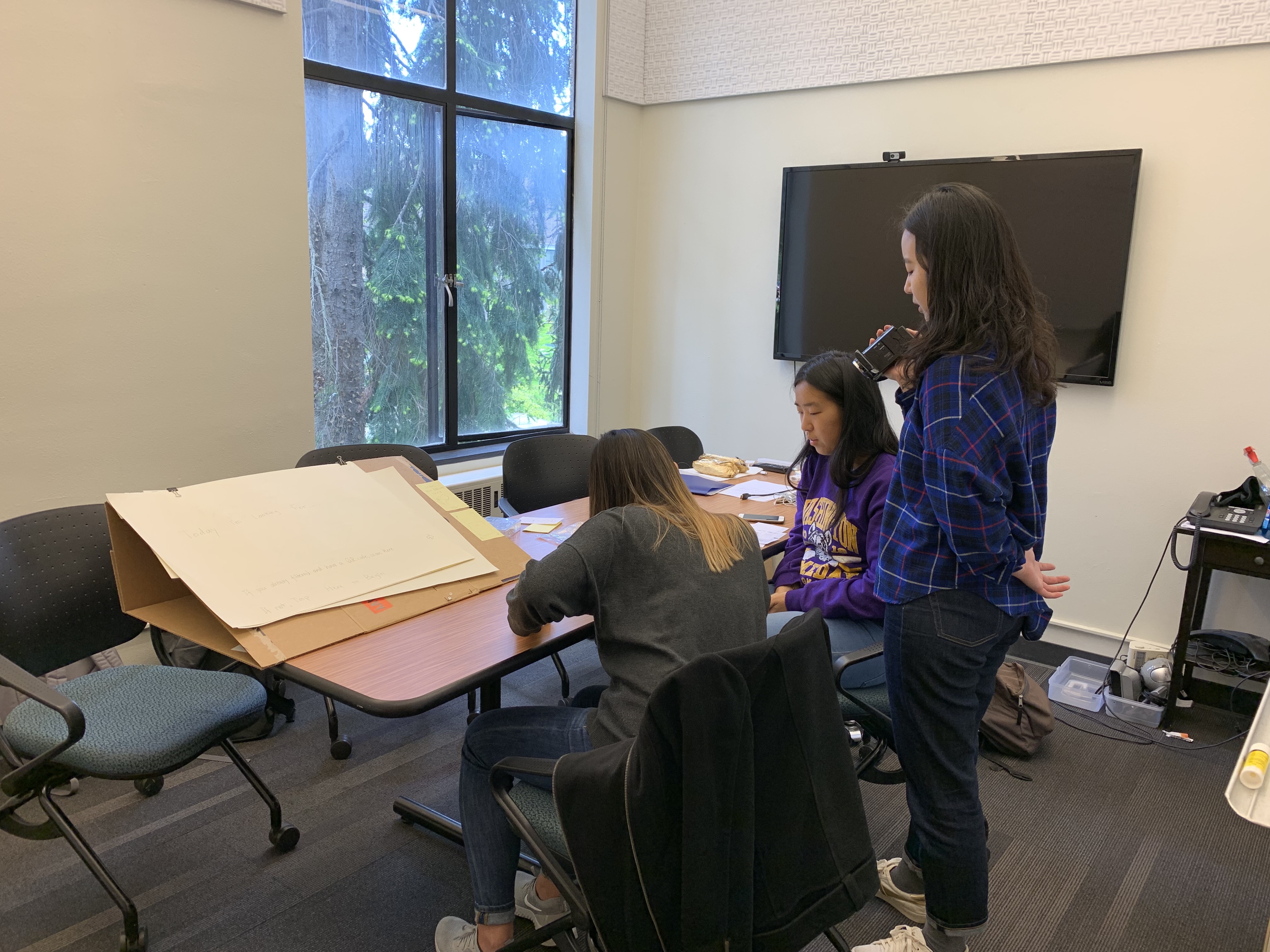

Key Findings from Usability Testing
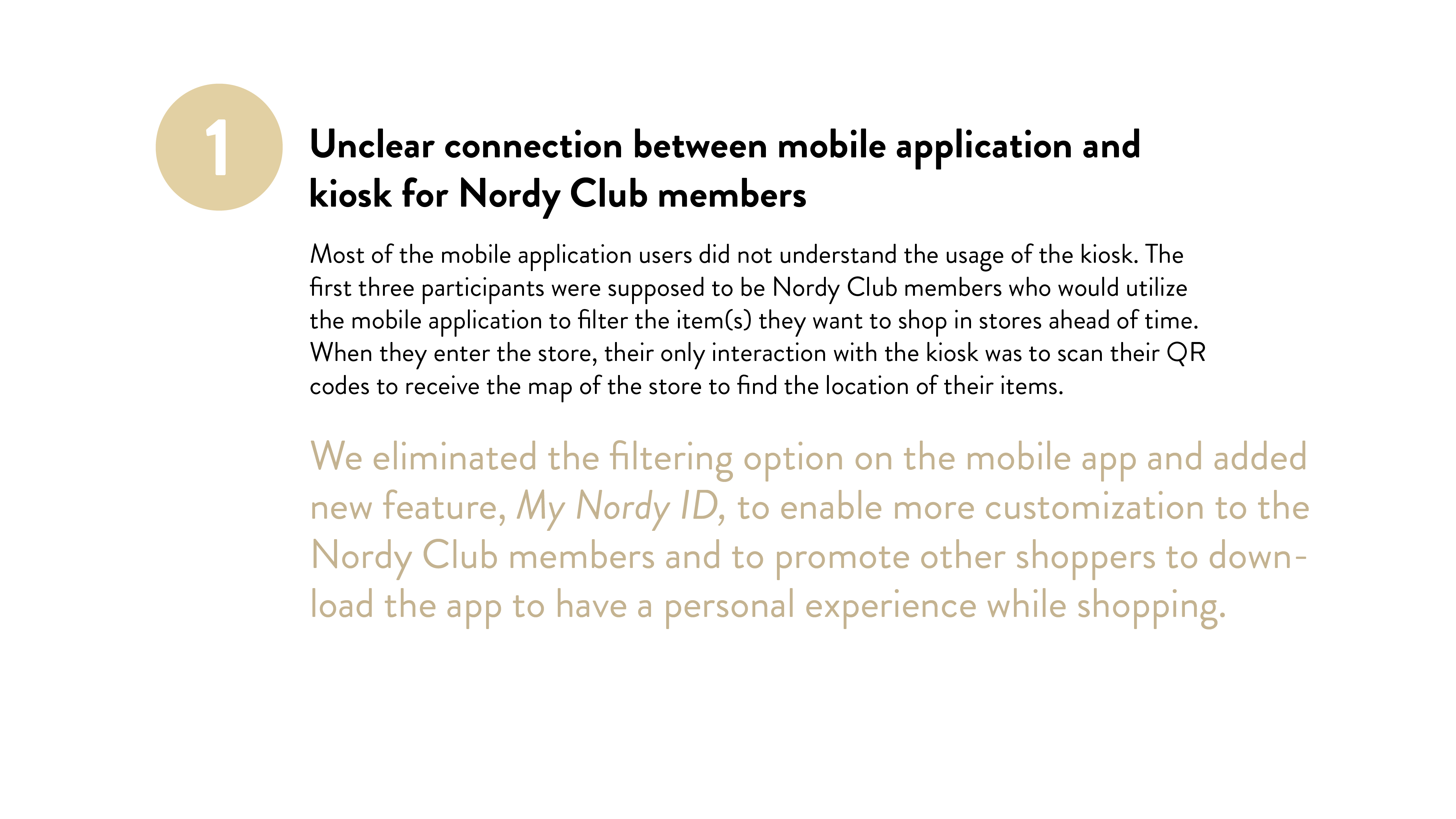
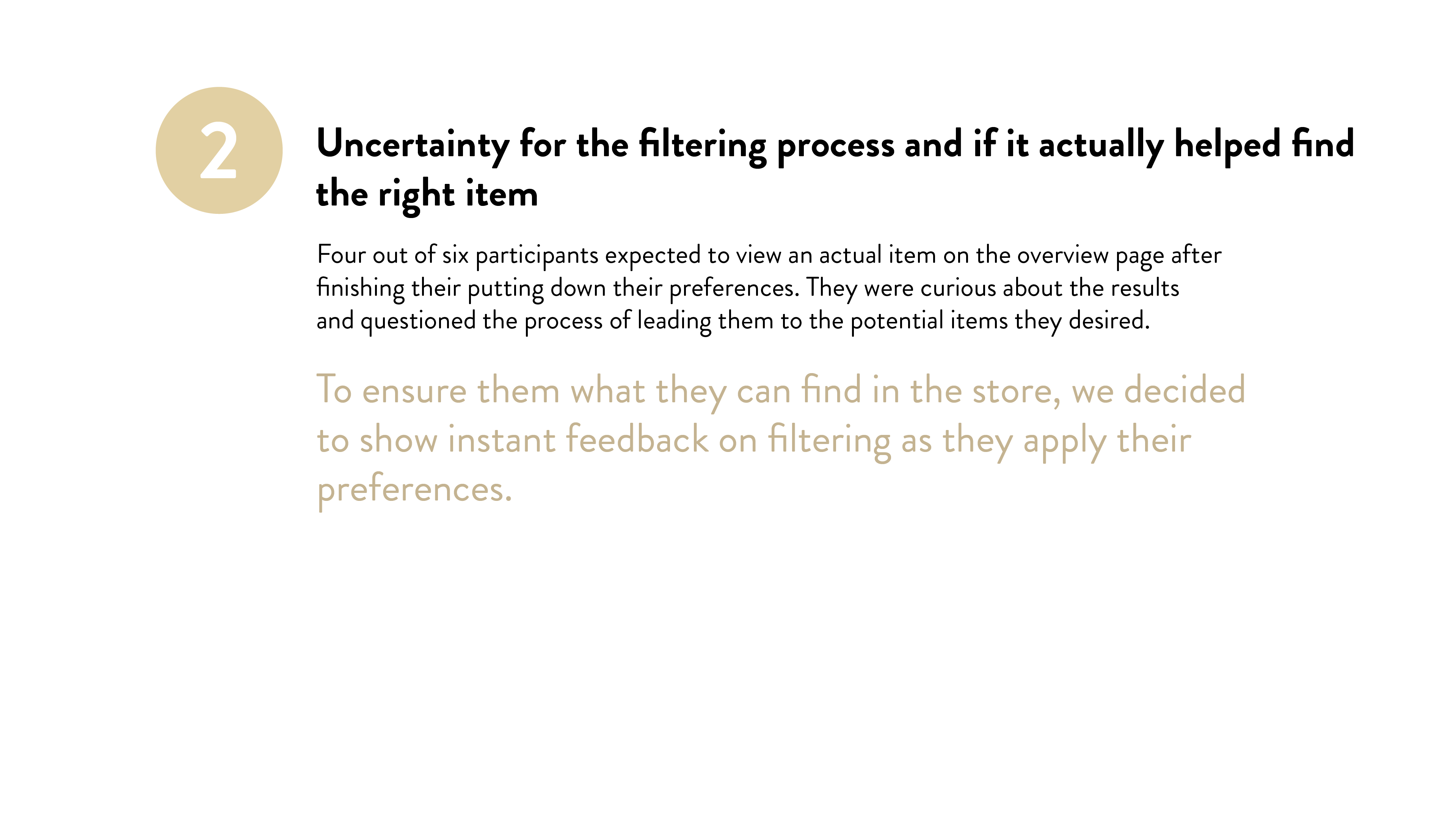
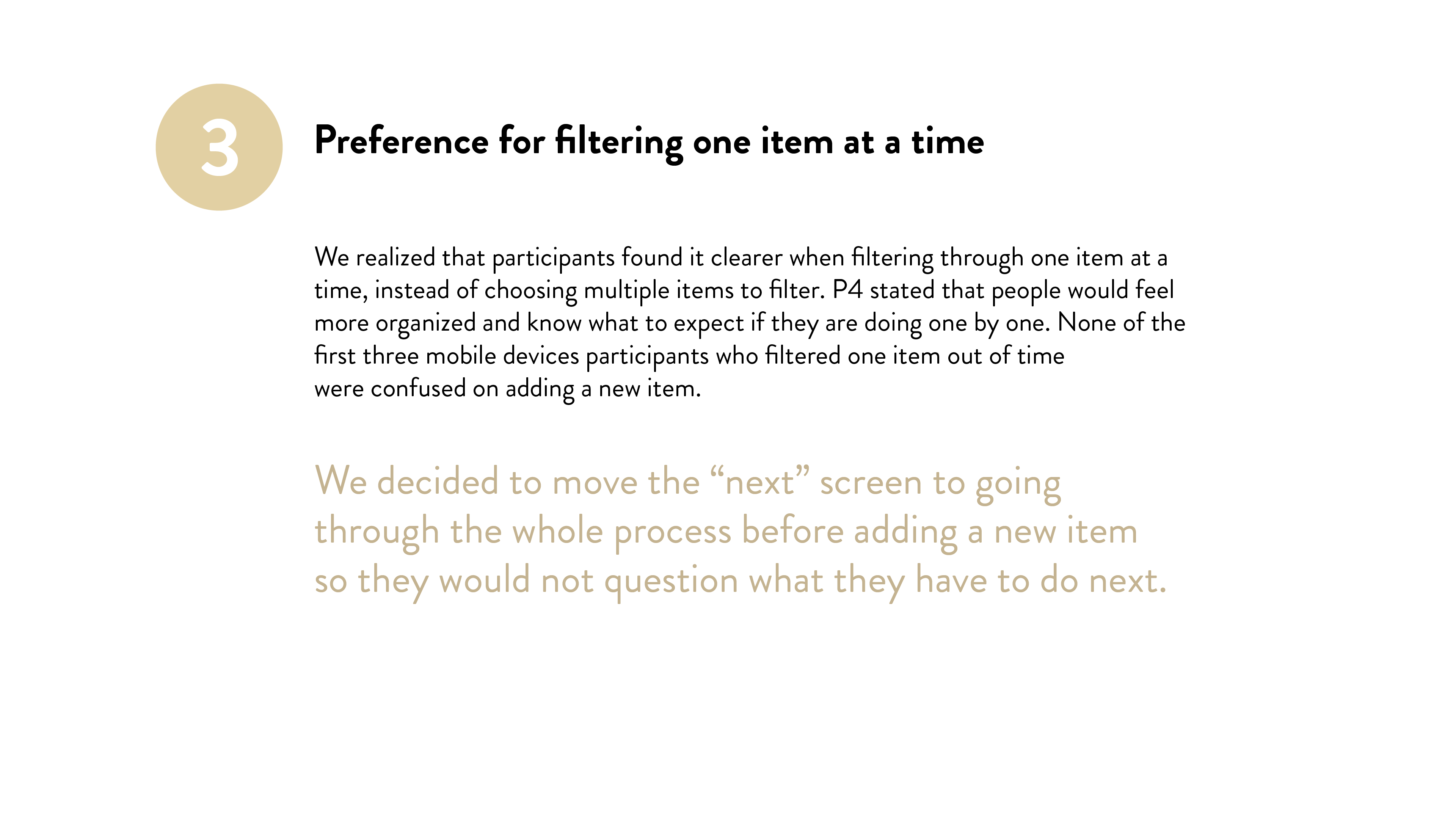
Iterations
I presented wireframes to the Nordstrom team and received many valuable feedback to iterate our design. Then, I iterated wireframes to finalize into high-fidelity design.
Iteration
We presented our process of wireframing to the Nordstrom team and received many valuable feedback to iterate our design. Then, we upgraded our wireframes to finalize into high-fidelity design.
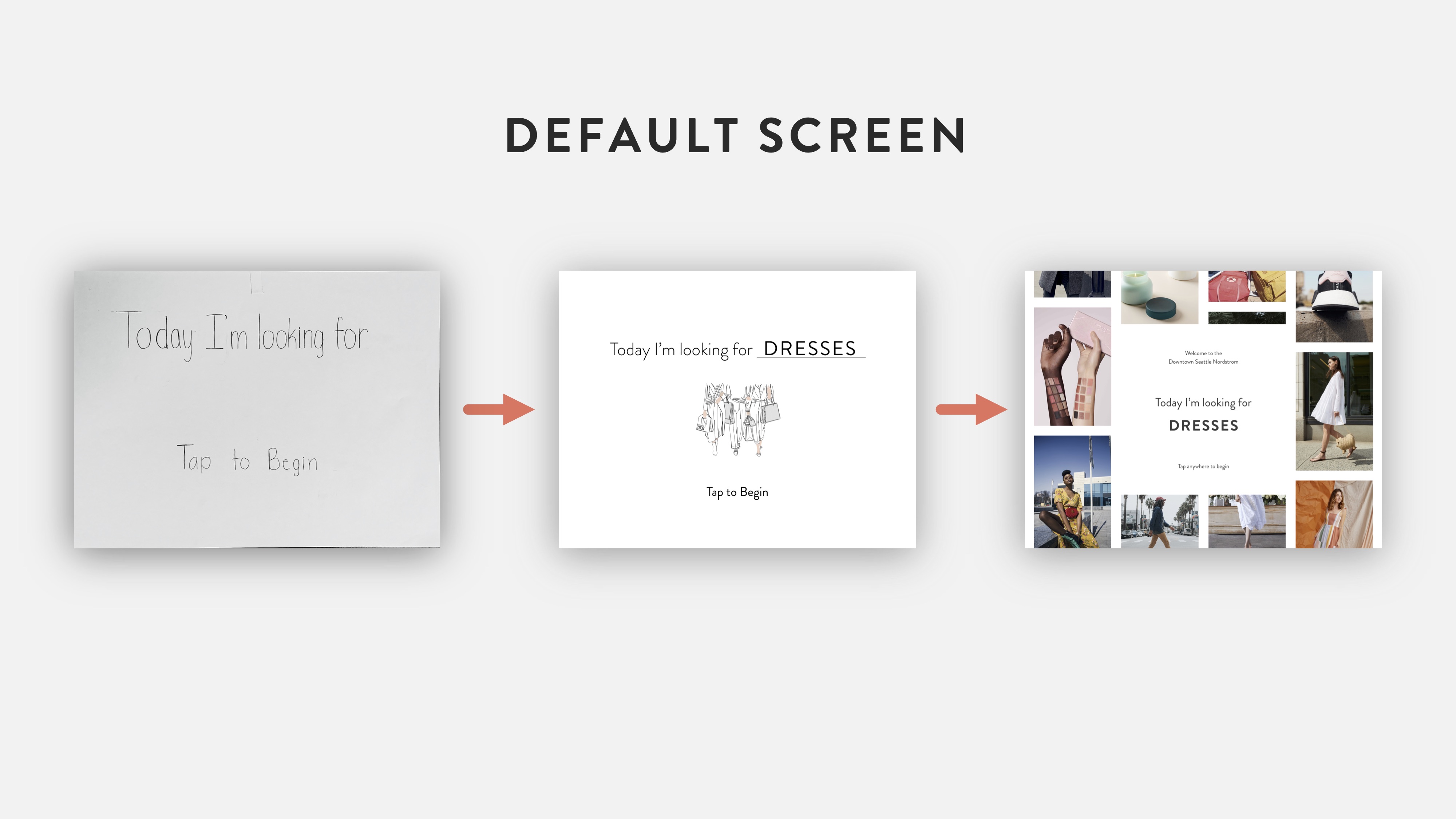
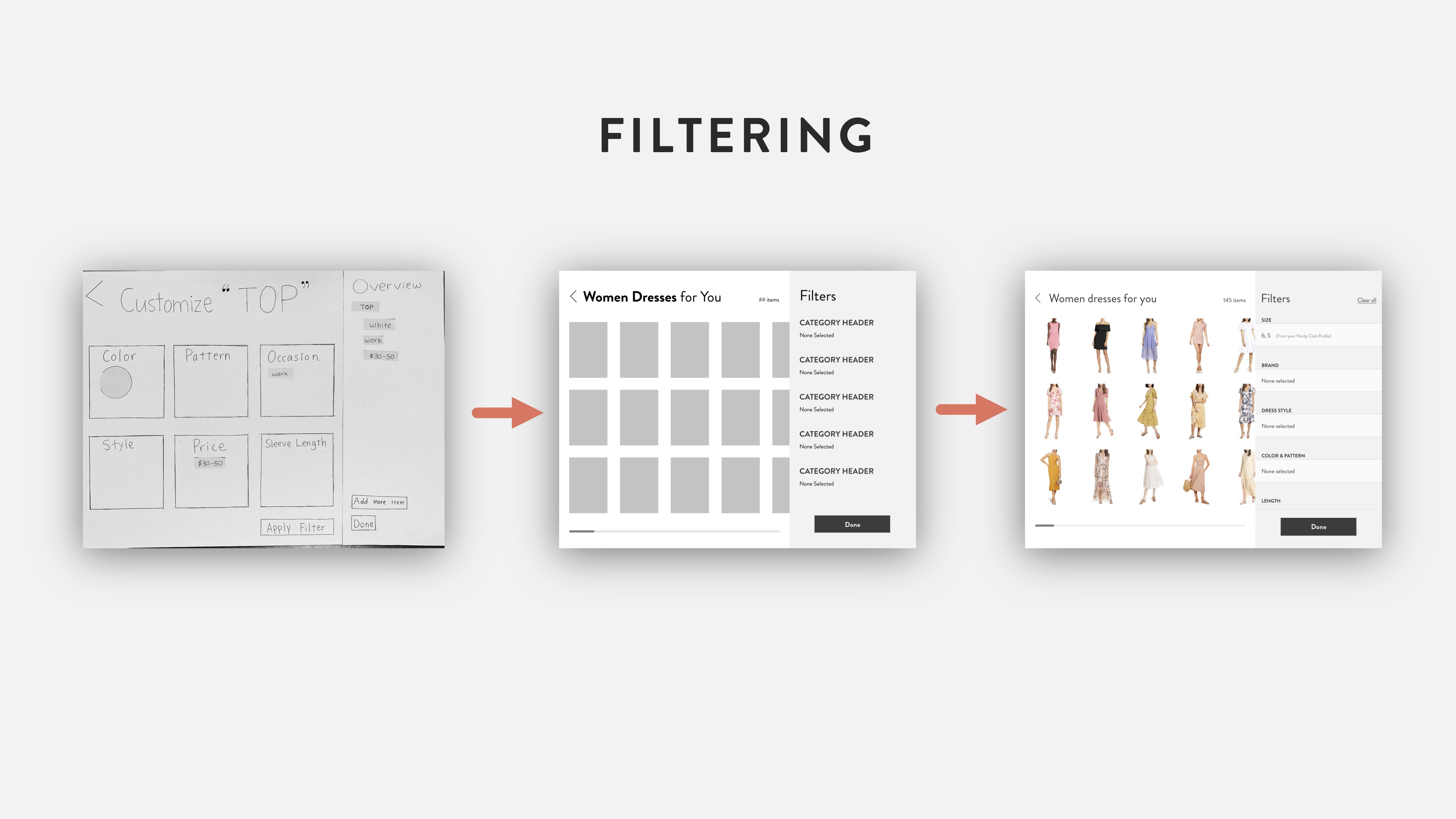
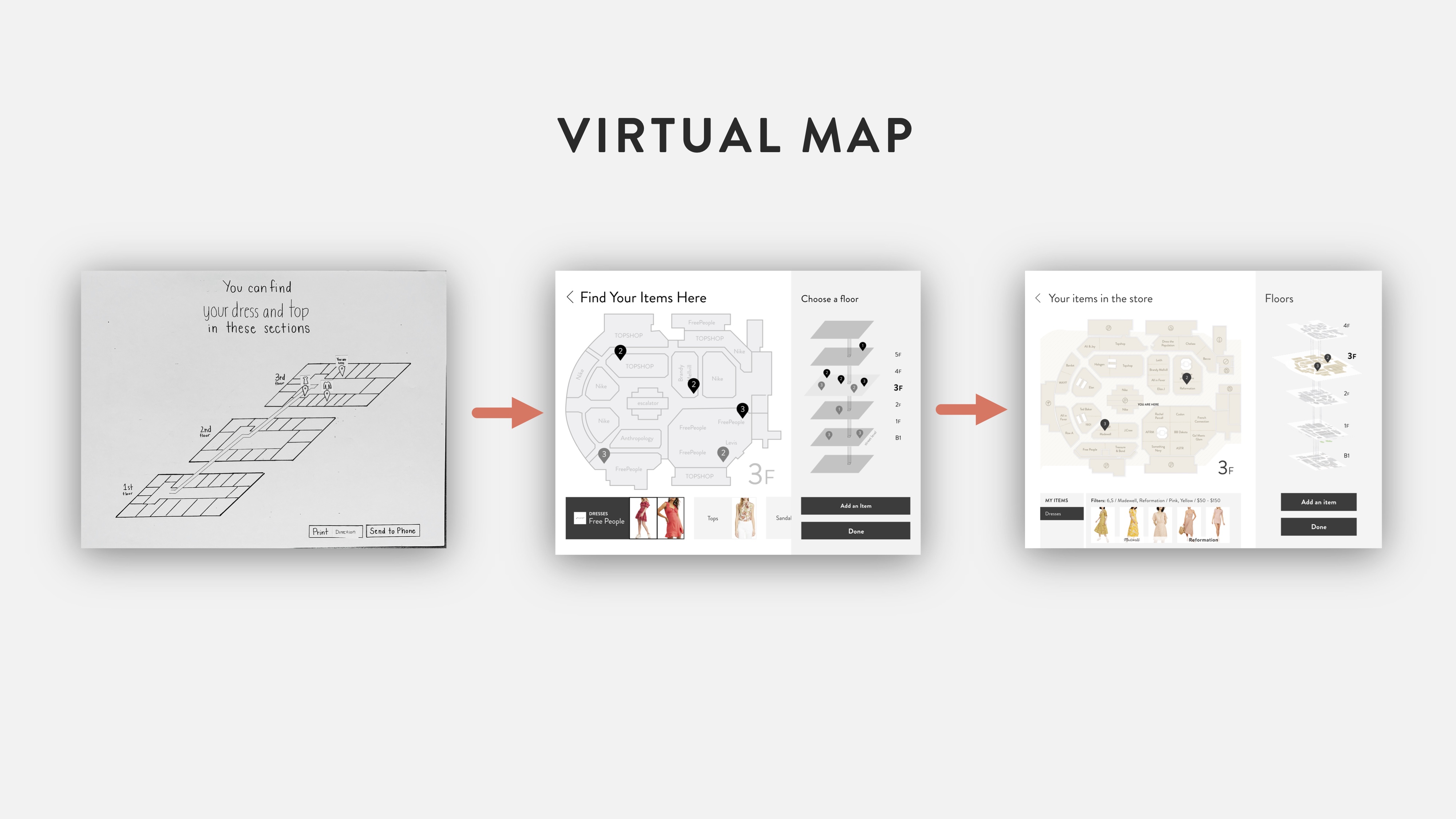
04 IMPLEMENTATION
Final Interactive Prototype
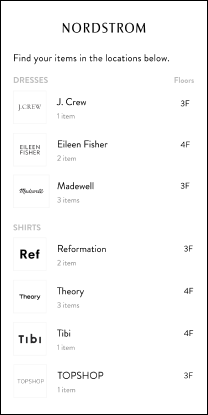
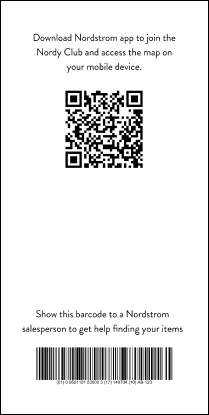
HCDE Capstone Showcase
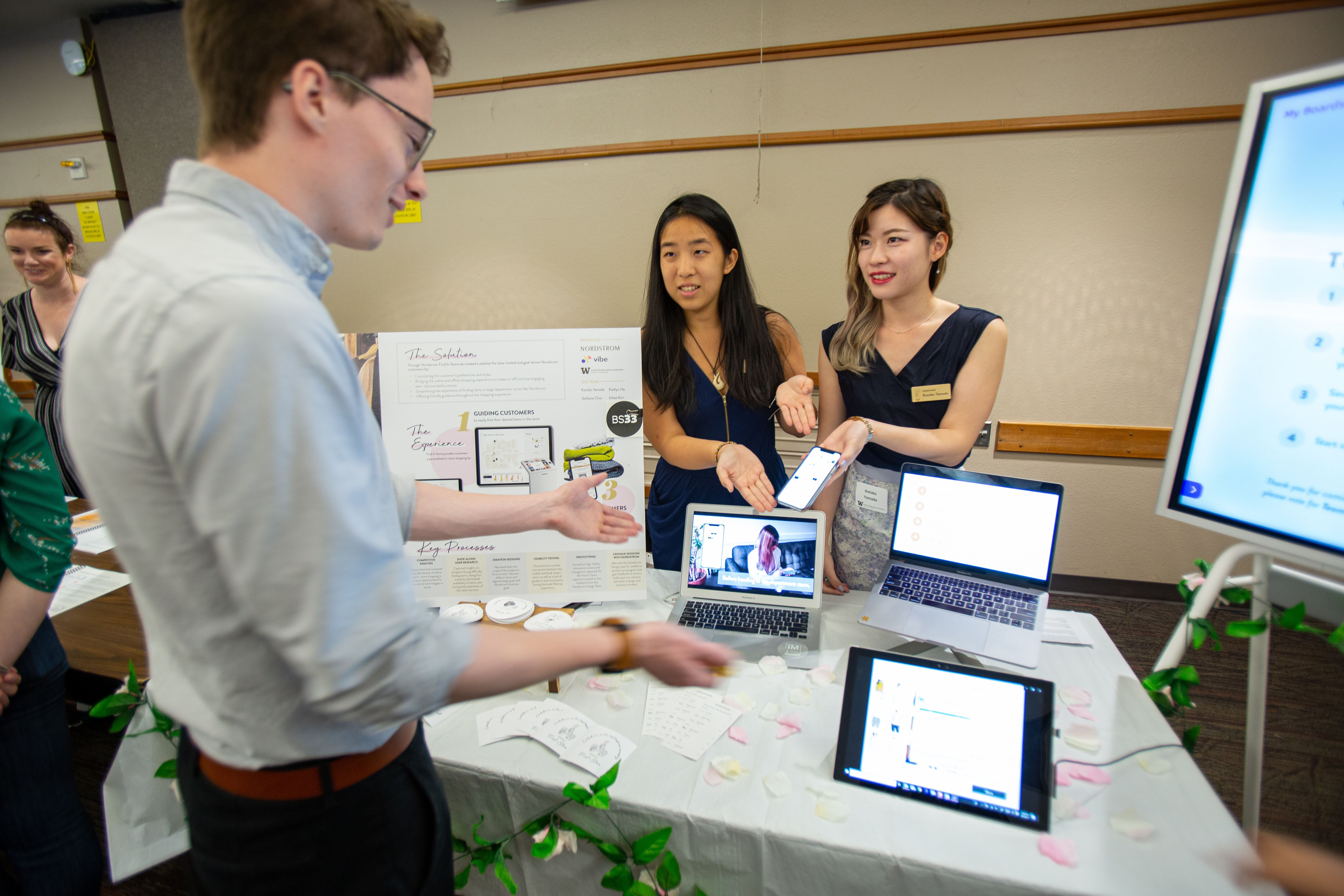
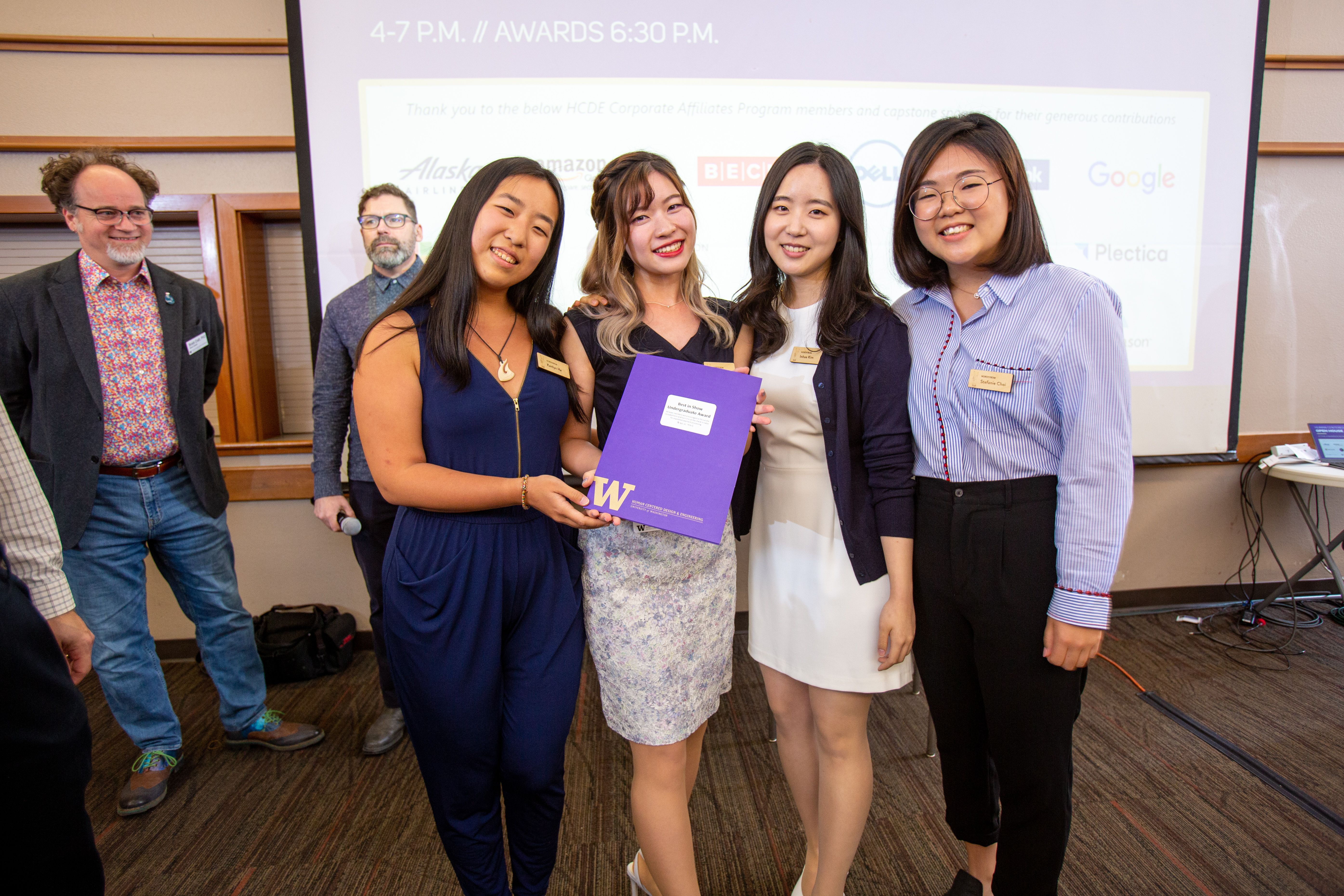
We showcased Find In Store at the HCDE Open House and presented our design process to the Nordstrom UX team. At the end of the Open House, we got the Best in Show Award.
Reflection
Reflecting on my six-month capstone project, I can confidently say that I gained the most valuable experience and knowledge during my undergraduate program through the exceptional guidance and support of my team, sponsors, and instructors. My teammates taught me how to effectively communicate with professionals, confidently deliver my message, and step out of my comfort zone.
We won the Best in Show Award at the HCDE Open House.It was the first time I had ever worked so competitively, and winning an award was a huge accomplishment for me in my career. During this project, I learned to work diligently with the mindset that 'I can do this.' I also learned to prioritize the user's needs and the business goals throughout the design process in order to increase the company's productivity.
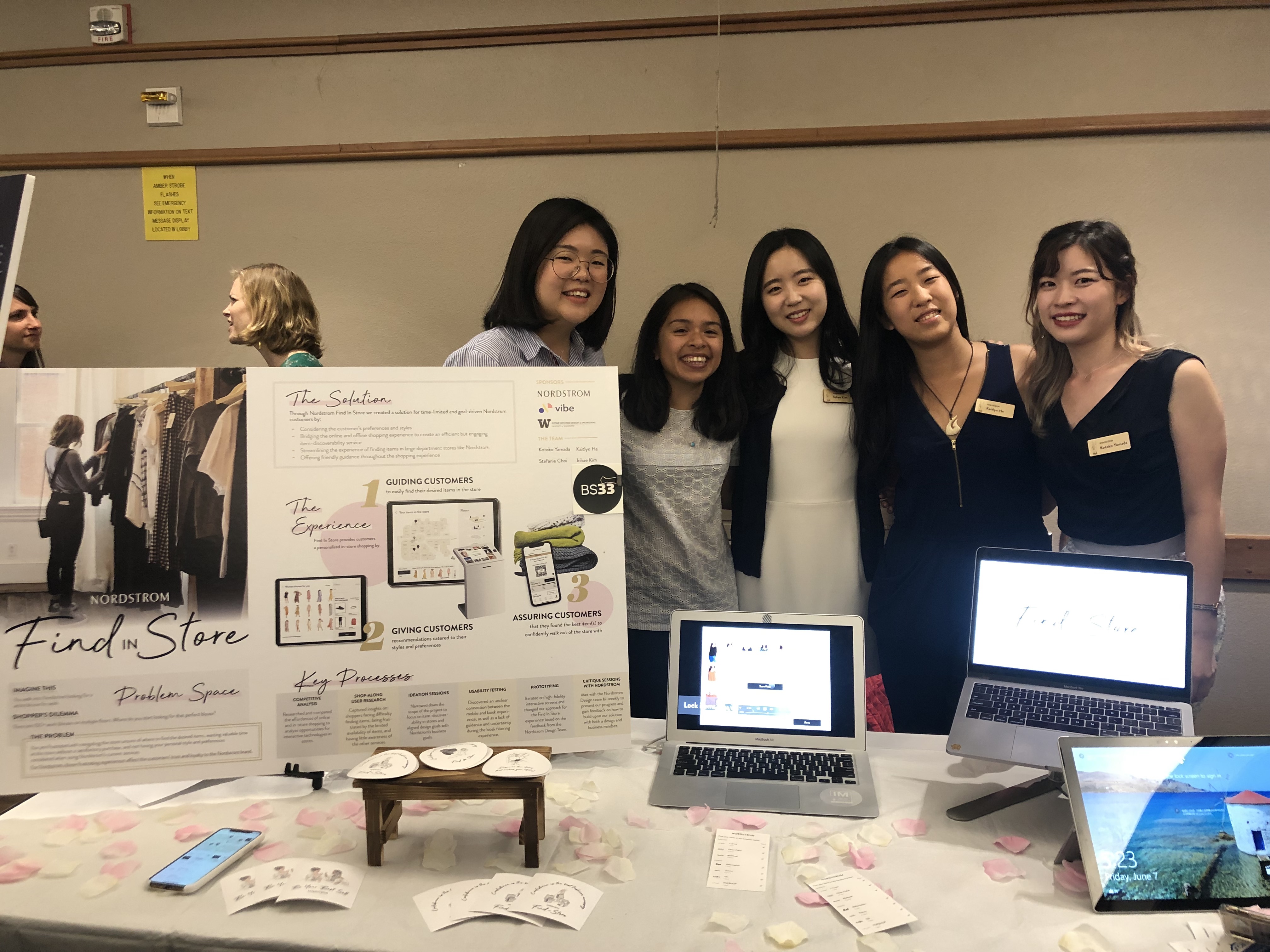
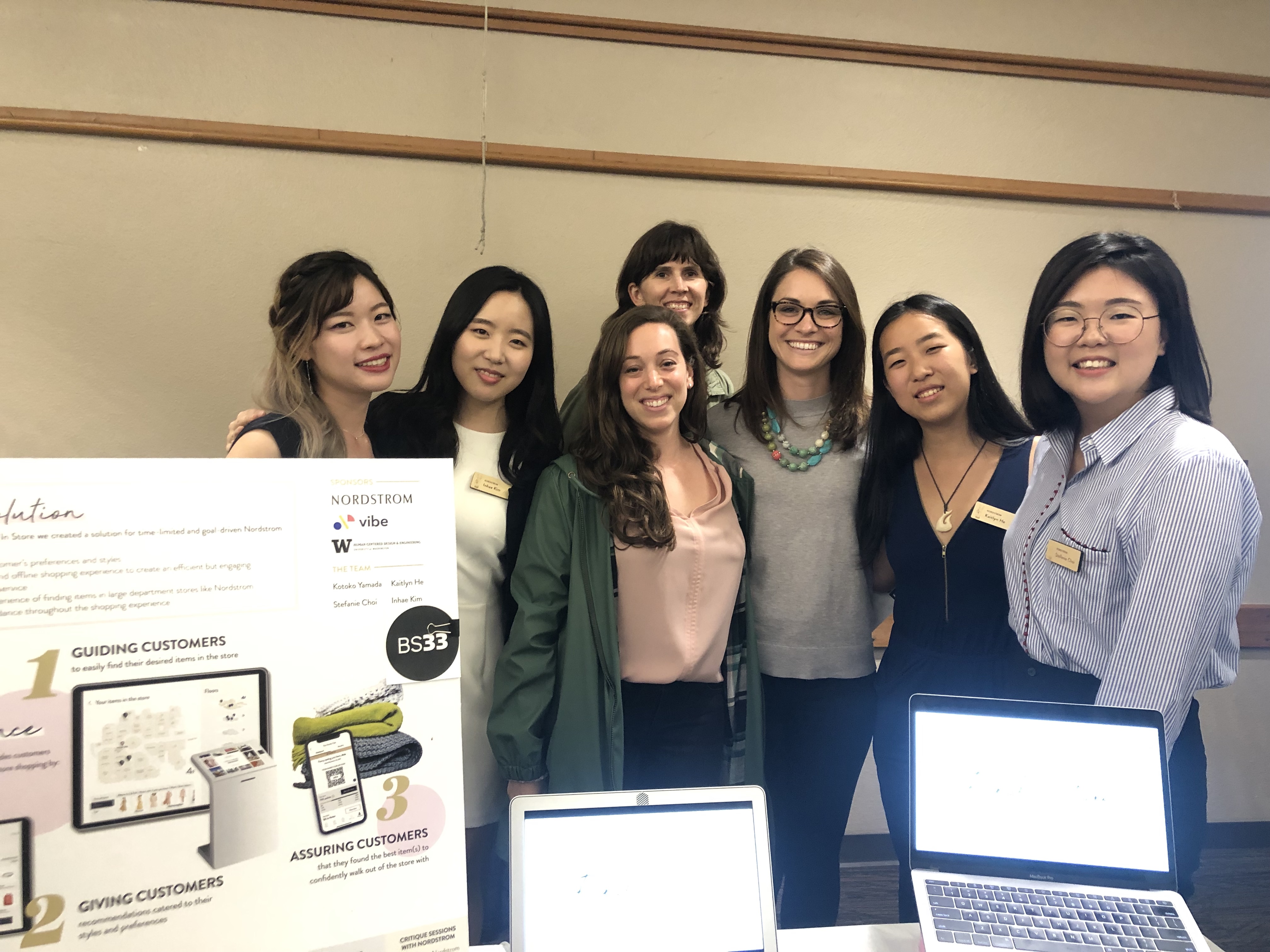
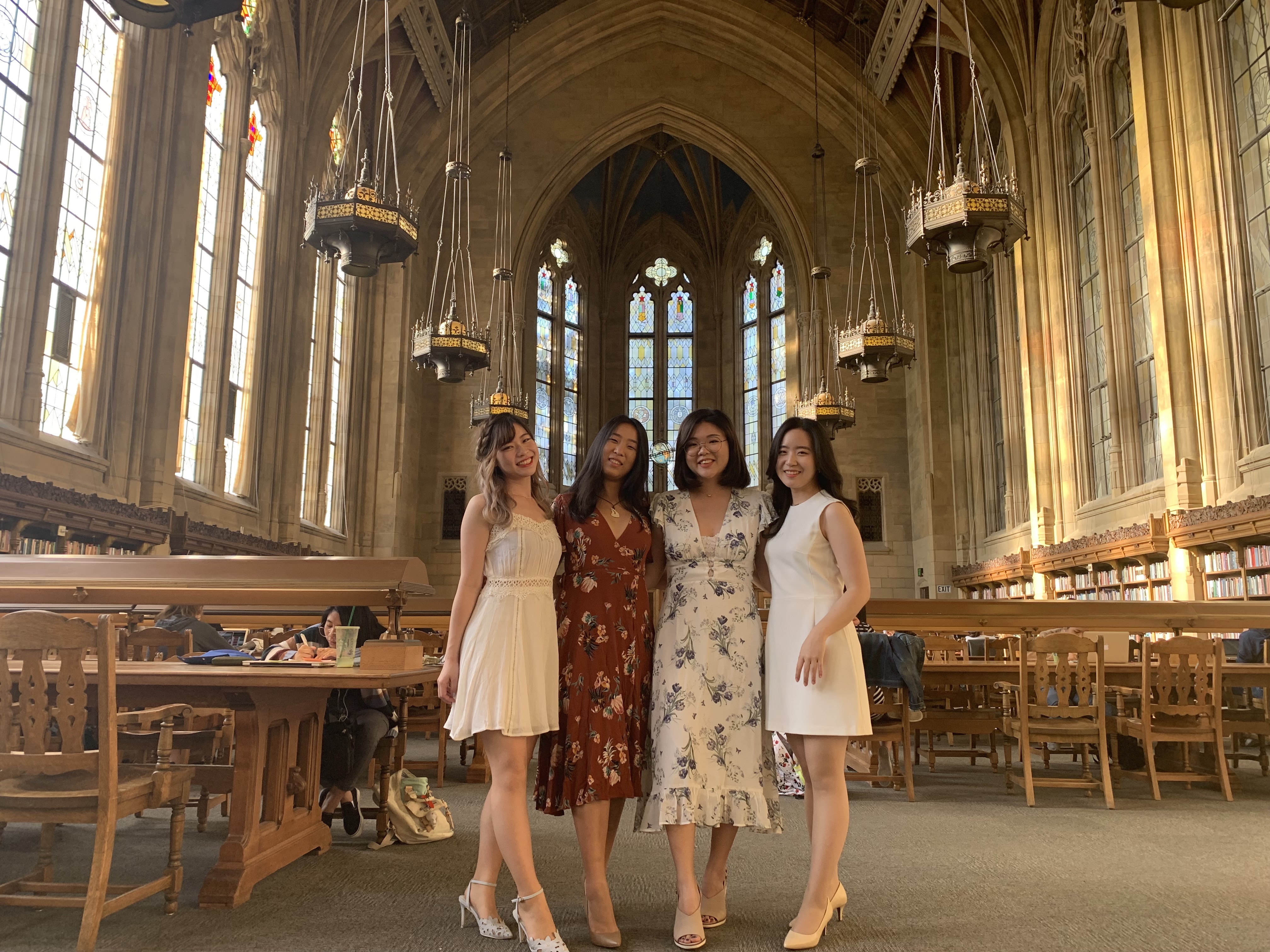
I am grateful to Wendy Roldan, our mentor, for guiding and supporting us throughout the process. I extend my heartfelt appreciation to the Nordstrom UX team - Kristin Gannon, Sarah Carne, Sheila Paschall, and Ashley Constanzo - for their time, guidance, and unwavering enthusiasm for five months. Lastly, I am thankful to all my team members for their invaluable contributions and fond memories. This project helped me become a UX Designer before entering the industry.
See More
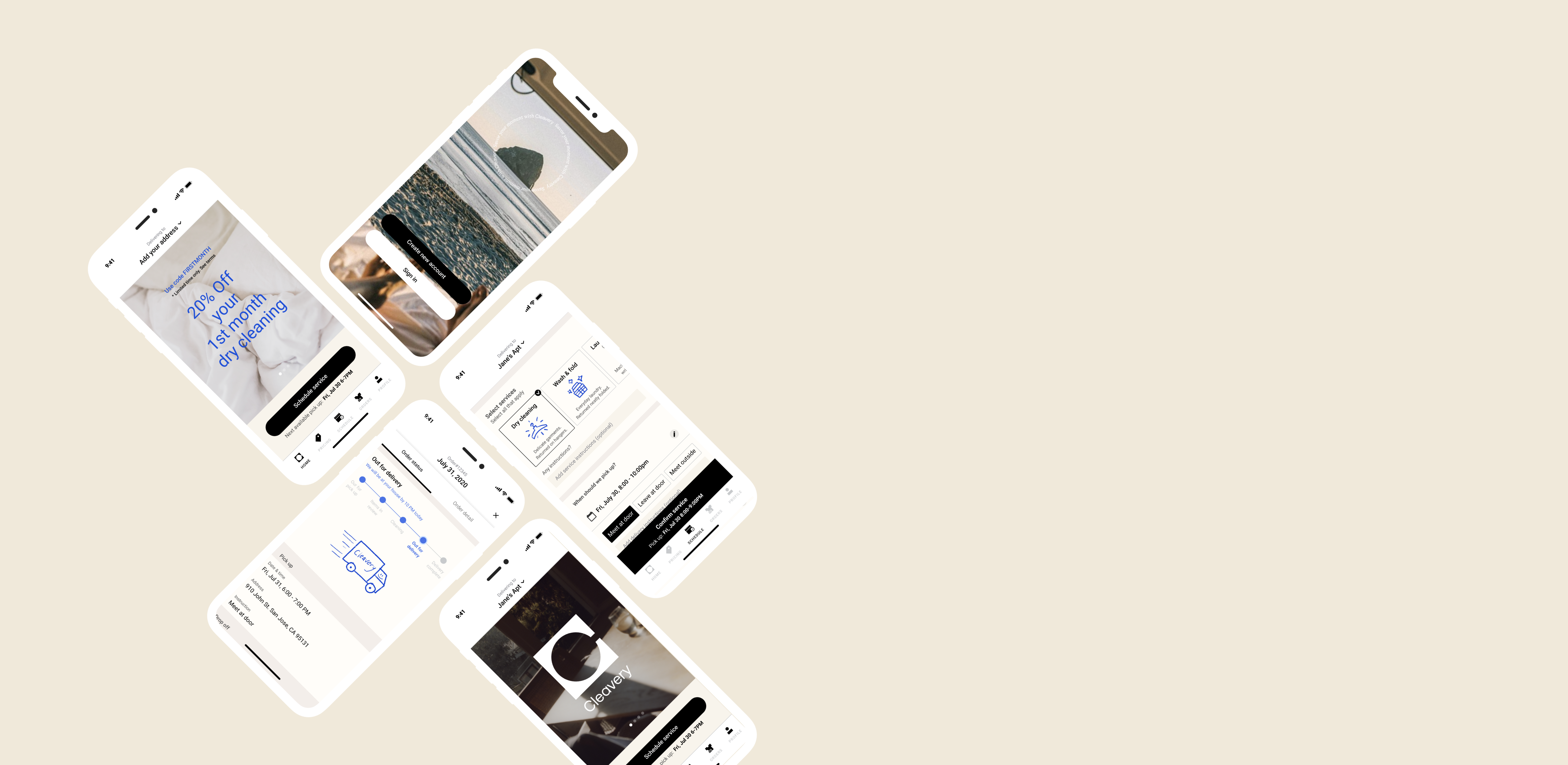
CleaveryDoor-to-door Laundry Service
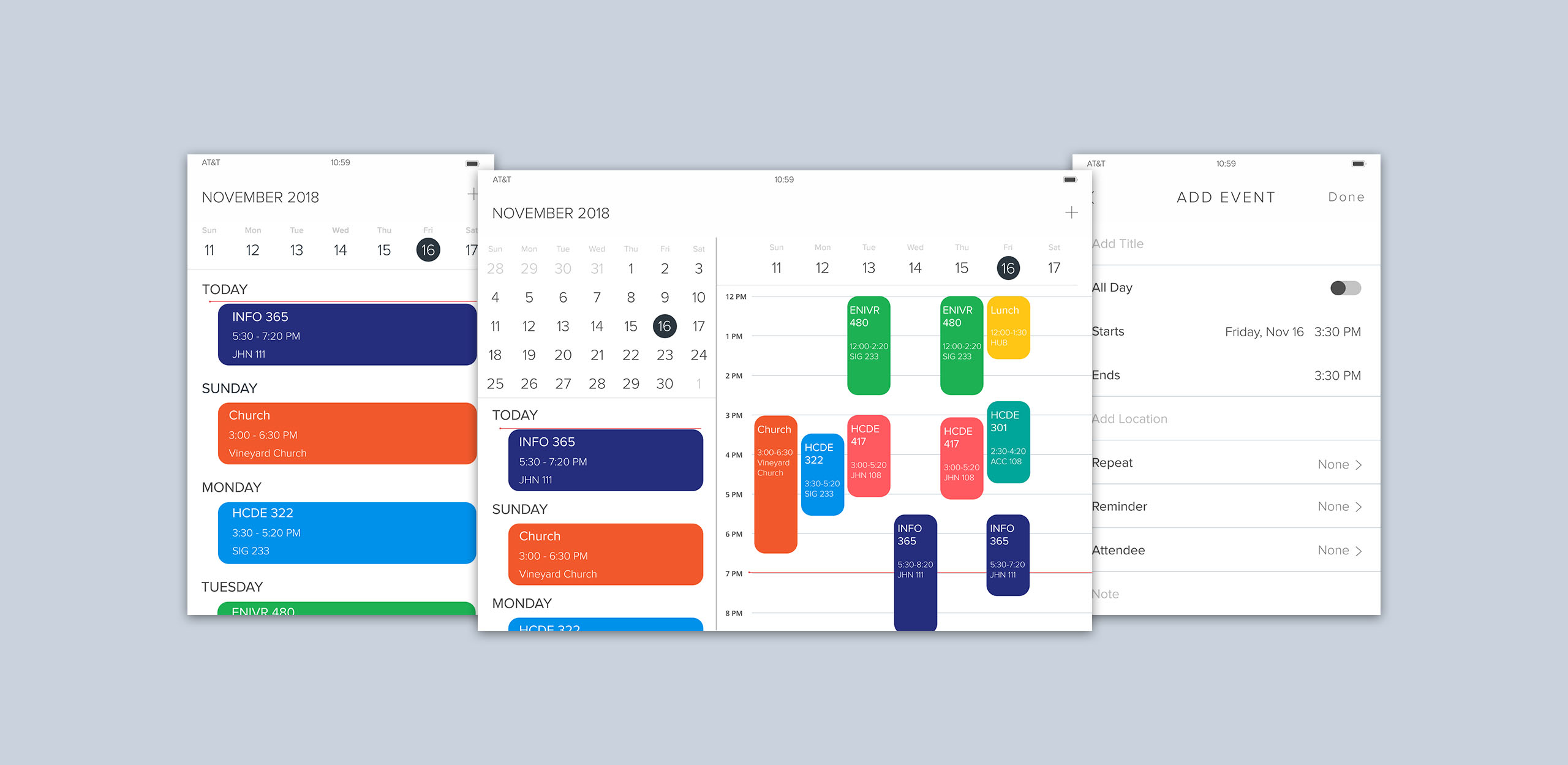
Pear OSA Foldable Mobile Device
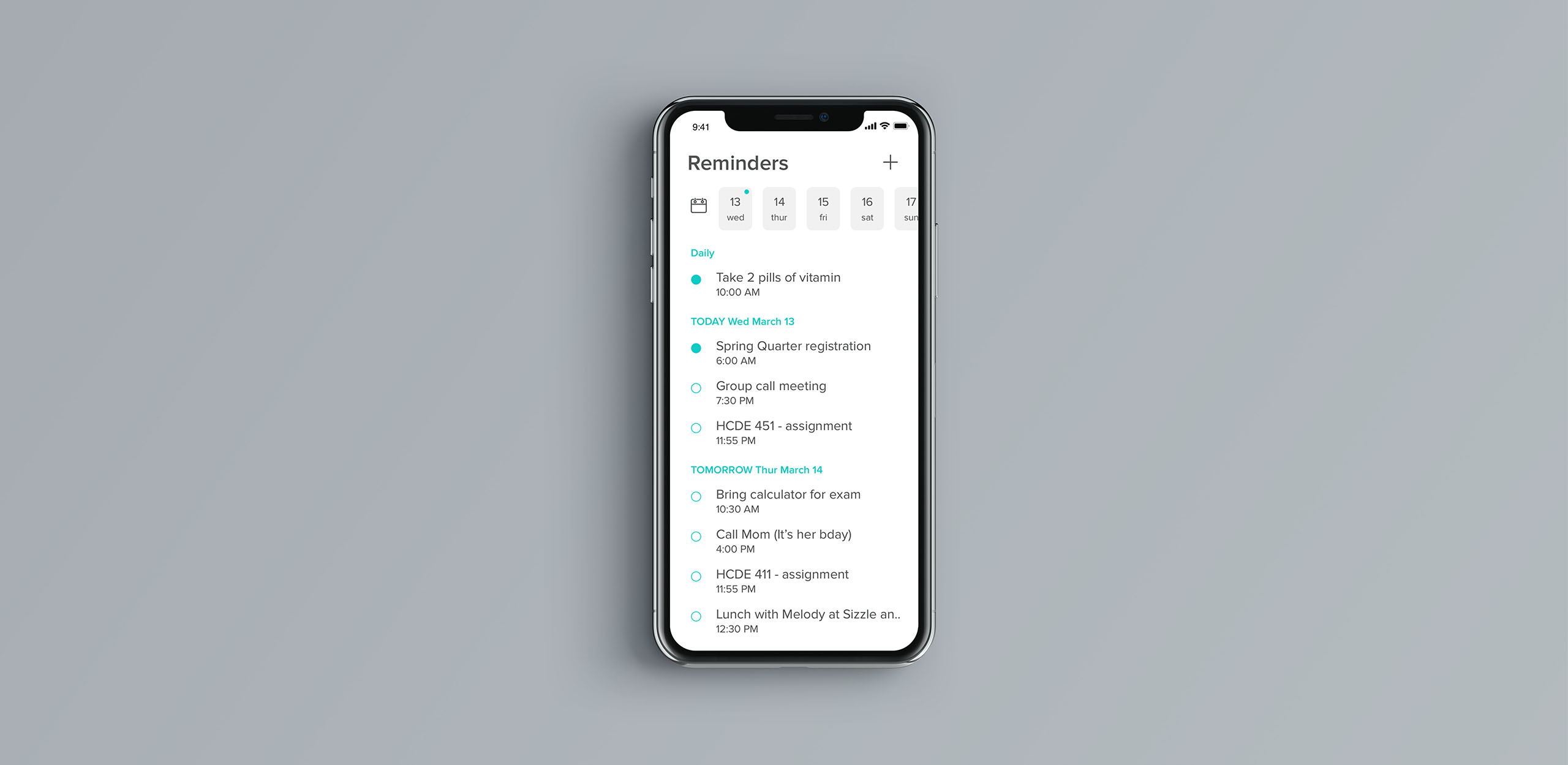
Remind HolderGentle Reminder for Office Workers